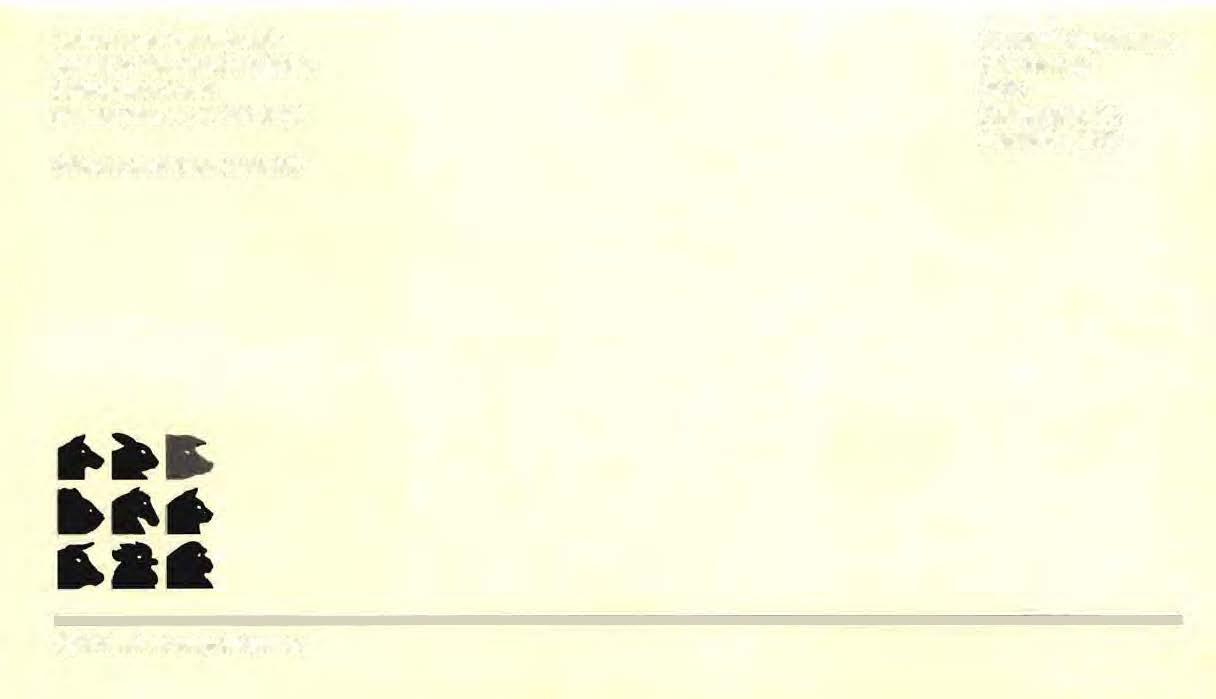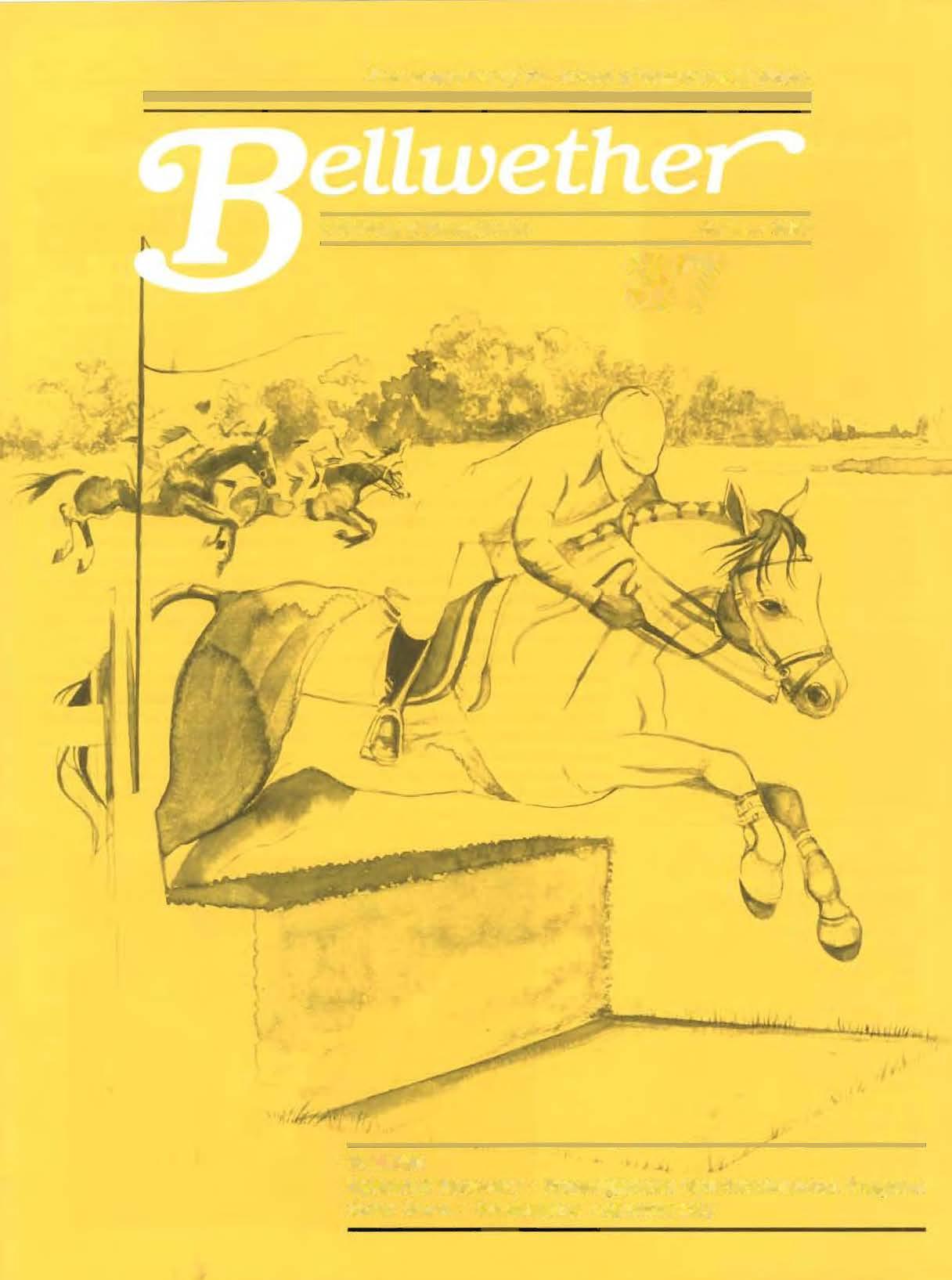

Frorn The Dean
Dear friends:
I could not be more privileged to be the first endowed dean at any veterinary school in North America, and I am delighted to send you my initial report as the Gilbert S. Kahn Dean ot Veterinary Medicine. I wish to thank the many people who were wonderfully supportive and generous to me in the 12 months r served as Acting Dean and, incidentally, gained an apprenticeship at deaning; without their ev,pert guidance I would not be writing to you today
As we prepare to greet the 21st century. what arc my ambitions for the School? The answer is not simple, for the challenge� and opportunities for veterinary medicine todny :nc more varied and complex than ever. Mainstream 1\merica
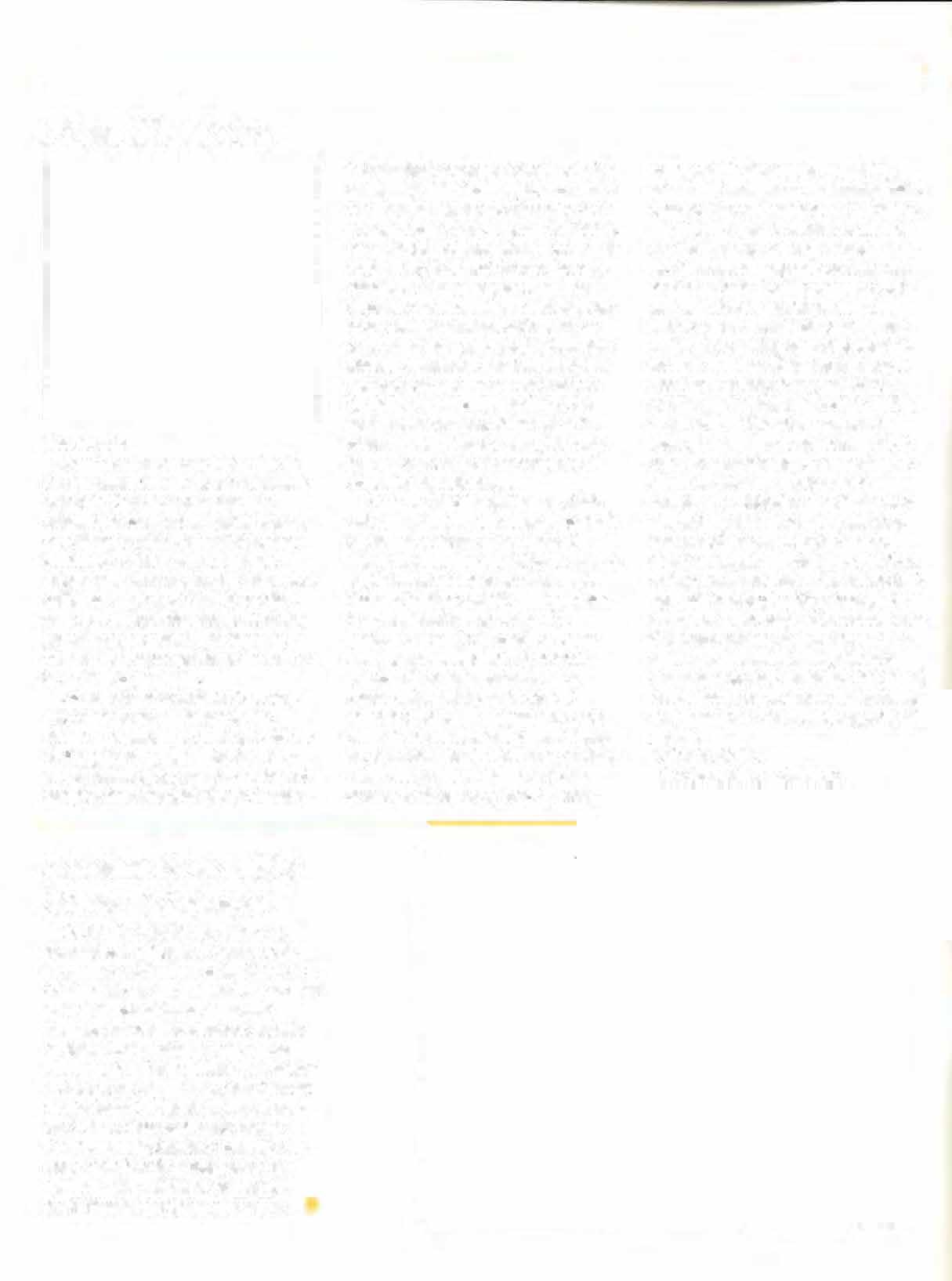
Landeau Honored by Board ofOverseers
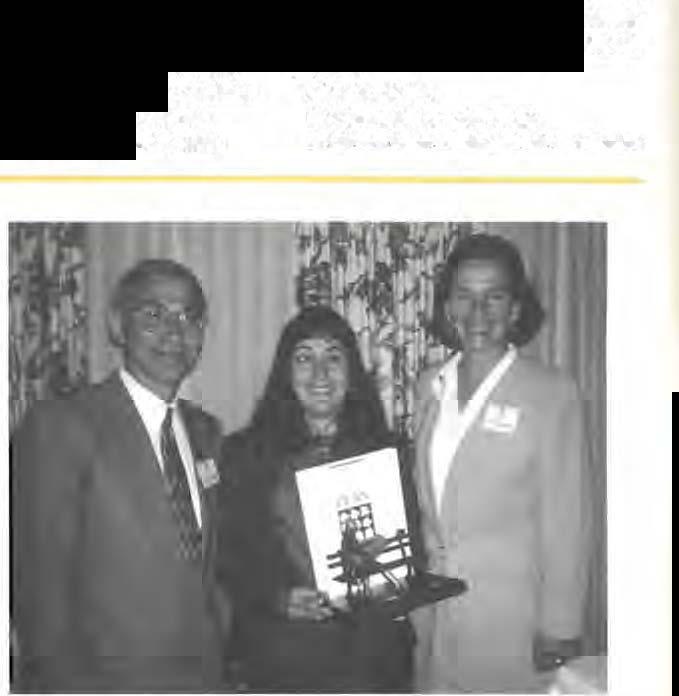
Or. Laurie J. Landeau. V'84, was honored by the Board of Overseers for her many contributions to the School. Or. Landeau serves on the Board, she is very actively involved in the Aquavet® program and teaches veterinary aquatic medicine. Dr. Landeau served on the "Save the Veterinary School Committee" and each year supports the benefit event for the School at S>lratoga. Shown here are William Schawbel, chair, Board of Overseers, and Christine Connelly, vice chair of the board, as they present Dr. Landeau with a miniature of the Benjamin Franklin sculpture on campus.
is mcreasingly concerned about the safety and quality of its food supply, ahout ethical issues and the use of animals by society, and about the environment in which it lives. We must address these concerns and meet society's demand for ever more sophisticated diagnostic procedures and therapies: we must deliver a different type of service to production agriculture; we must master new and emerging infectious diseases of animals, especially those that they transmit to man; we must embrace the fledgling aquaculture industry; we must sustain the competitiveness of the Nation's animal industry in a global market; and we must be in the vanguard of advancing biotechnology.
These are exciting challenges which will require that the School make strategic choices as we focus on the future. Of prime importance is our ability to attract a highly talented body of students despite financial background. We must provide a first class learning experience. Our graduates are our most precious legacy and they are the standard by which the School will be measured for years to come. Unfortunately, as the cost of veterinary education progressively rises, more of our students must borrow to pay for their education. Far too many graduate with a crushing debt burden that can severely limit cureer options. We must
transform this situation by expanding scholarship endowment ::tnd seeking relief from the General Assembly in Harrisburg. We have a proud tradition of commitment to fundamental research and a number of parameters support our claim that the School is the leading research veterinary school i.n the world. To secure our future we must sustain this position and remain at the cutting edge of biomedical research. Because of the broad sweep of veterinary medicine's responsibilities to society, our mission must include studies at atl levels of biological organization from gene structure to environmental design. We must strengthen interactions between the clinician and the bench scientist. The School can use its intellectual and physical resources at this interface> benefitting our teaching program and advancing the services we provide to society. The application of molecular biology and the emerging biotechnology industry are on the verge of introducing new diagnostic methods and treatments for a spectrum of diseases and significantly changing veterinary medicine. The School must eagerly p)ay a central role in leading the profession in these emerging fields of growth.
Alan M. Kelly, B.V.Sc., M.R.C.V.S., Ph.D.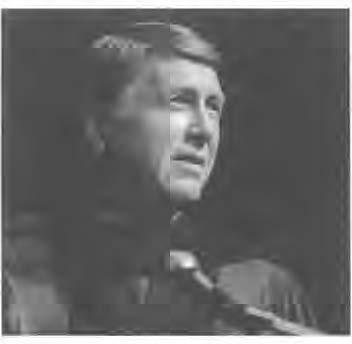 TJu, Cilberl \.l<f1h>1 J)e1111oflll!ieri""TY Mcdich•c
TJu, Cilberl \.l<f1h>1 J)e1111oflll!ieri""TY Mcdich•c
Splendid Recovery
He is called" Miracle Horse", "Steeplechase Marvel" and "Living Legend."Wherever he competes, members of his fan club are there to cheer him on, and turf reporters chronicle his career with a note ofawe. Victorian Hill. steeplechasing's all-time leading money winner, defied all odds in tlte spring of 1992 when he returned to racing. after rebounding from complex colic surgery the previous fall. He finished second in the Atlanta Cup and won the lroquois for a second year. Three years later he is still going strong, panicipating in the 1995 steeplechase season under the management of his trainer, Janet Elliot.
"Vic was a lucky horse,'' says Dr. Midge Leitch, his veterinarian. ·'He got sick Juring the day in a barn where people paid close allention. He received immediate veterinary care and got to surgery quickly, before a toxic reaction could develop. And he was lucky that he was near a major veterinary center."
·'The horse was seriously ill when he was admi11ed to New Bohon Center in September 1991 after being stricken by colic. We were told that he might not survive the surgery," recalls William Lickle, his owner. "When he came through the procedure alright, it was not known whether he could race again because half his large colon had lo be removed to save his life. Only very few horses had survived such a surgery and none had ever competed again."
"The surgery, performed by Dr. Daviu Freeman and Dr. William Hayes. was a

forward looking piece ofsurgery:· explains Dr. Leitch. "The colon was resec1ed and a sit.le-lo-side anastomosis was performed. Ten years ago this coult.ln't have been done. It is really marvelous how treatment horizons have expanded, not just at New Bolton Center but in equine veterinary medicine in general."
ll helped that Vic was left with seven feet of large colon and thai he was in superb health and condition prior 10 the colic episode. But the illness took its toll. "He lost 300 pounds of bodyweight io a very short time because he had to be confined to his stall," says Mr. Lickle.
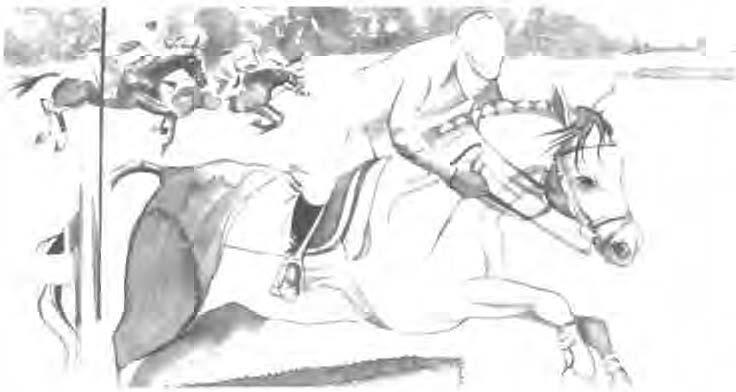
Vicleft New Bolton Center's Intensive Care Unit soon after surgery to first recuperate slow!y under the care of Dr. Leitch and then at the stable of Janet Elliot. Tn the months that followed, his feeding regimen had to be changed to accommodate his drastically reduced digestive system. Jt required frequent feedings ofroughage and gradual addition ofgrain 10 bring him back to condition. "The colon is vital to water absorption and the conversion of feedstuffs like grain and hay into the proteins that are needed to build, maintain and fuel a horse's body," explains Dr. Leitch. "We had to develop a diet and feeding regimen that would take into account Vic's reduced colon capacity and would provide maximum protein uptake to allow him to regain condition and then maintain it. Once hereturned to training and competition, these added demands had to be taken
into account." Vic's diet was developed overa period oftime by Dr. Leitch and New Bolton Center clinicians. Intake and output were and are monitored to watch for siens of trouhle like imraction. These close watches paid off- twice he developed abdominal discomfort and was treated at once and no complications developed.
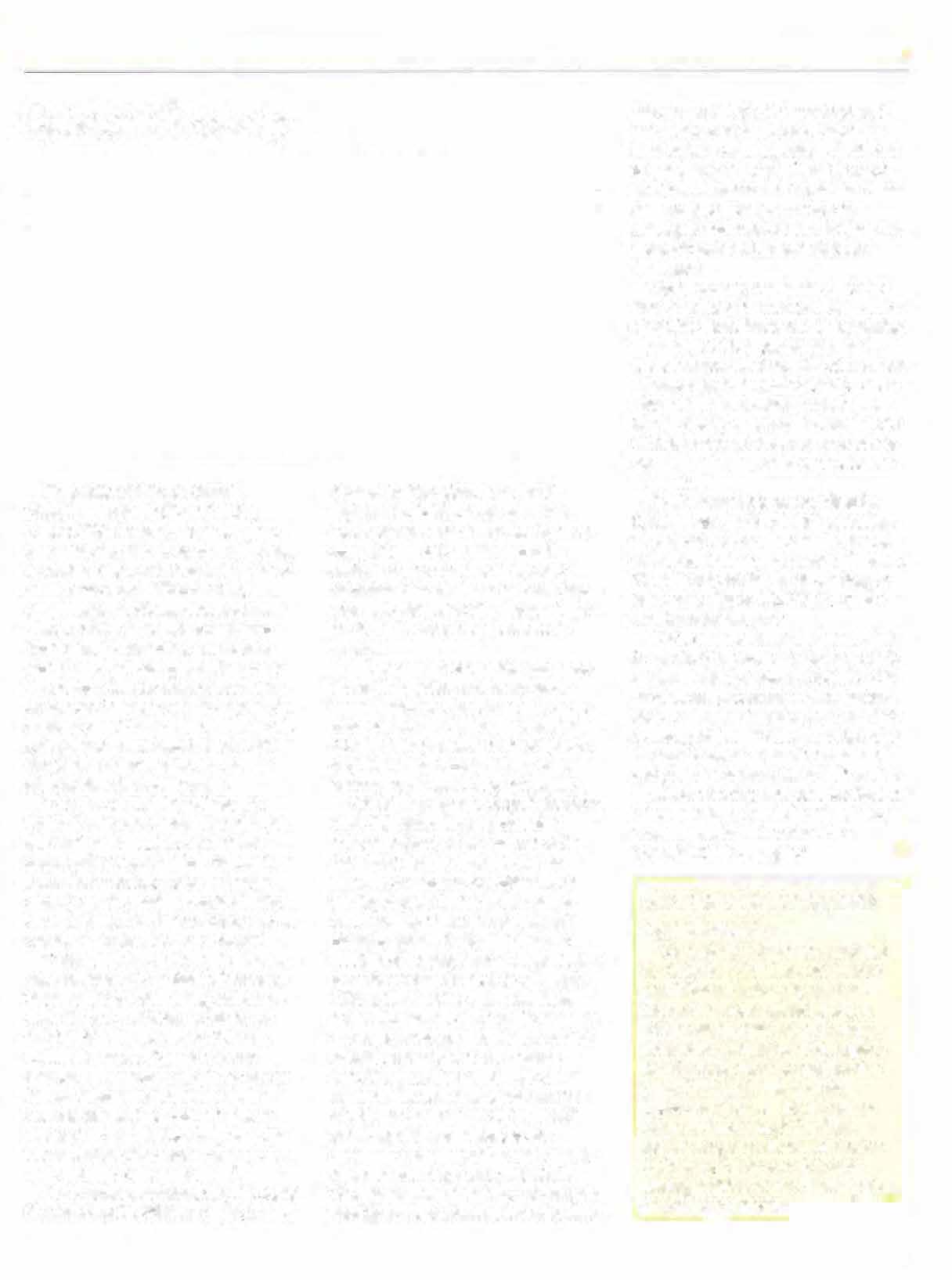
Vic's recovery was taken a day at a time. Gradually he was turned out and as his activity level increased, light training was added. Things progressed and the horse resumed training. ·we djdn't know whether it would work," says Dr. Leitch. "But he lived at a training center where he was closely watched and monitored. I think his recovery is due in great part to the immaculate care and close auention he received.''
In his remarkable career, Victorian Hill has won over $700,000, exceeding his nearest rival by more than a quarter million dollars. And from all indications, Vic will keep adding to his earnings as he is, according to Mr. Lickle. "recovered from the surgery."
Vic's contribution ro the record books is not all. "He plays an important role in equine medicine," says Dt. Leitch. "His survival and performance demonstrate that a horse may function well with half a colon, provided it receives a high level of care. He set an example of success and pushed treatment limits a bit further - this in turn may help save the lives of other horses that would be considered 'hopeless cases' if it weren't for Victorian Hill's example:·
Director ofDevelopment Appointment
David elson has been appointed the School of Veterinary Medicine's new Director of Development and Alumni Relations, effective July I. David was the Director of Develop· ment at the University of Pennsylvania Museum, a post he held for nine years. During his tenure at the University Museum, David orchestrated its successful $23 millinn capital campaign. Before joining tht' University. David served in fundraising positions at the Philadelphia Zoo ant.! the Americun Red Cross.
School to Build First Solar Dairy Barn in Pennsylvania
The U niversity ofPennsylvania School of Veterinary Medicine has completed plans and signed contracts to start construction of a 200-head solar datry barn for teaching and research at New Bolton Center in Chester County. The Allam Dairy l·acility solar dairy barn will be a first in Pennsylvania. This type of harn, usually built in the Northern states and Canada. has proved to be a big boon to the dairy industry. A solar barn is energy efficient, naturally bright, and easy to keep dry, all essential conditions for productive cows. Also, it is cost effective in terms of manpower and building expense .
The Allam Dair) facility solar dairy barn is n.amcd after Lmeritus Dean, Dr. Mark W. Allam, Class of '32. Dr. Allam was interim dean of the School of Veterinary Medicine from 1952-1953. In 1953 he was appointed dean andremained in that capacity untill973. Dr. Allam was instrumental in the development of New Bolton Center and still takes a great interest in it.
The new Allam Dairy Facil ity at New Bolton Center will serve as a living laboratory for the School ofVeterina ry Medicine. "'It is a commercial dairy with modifications for extensive and intensive research. We recognized that in order for us to do relevant research we needed the environmental setting that emulates the real world.'' says Dr. William Chalupa, professor of nutrition at the School's Center for Animal Health and Productivity (CAHP). "It's like having an on-site patient for us to st udy," ::;tates Dr. David Galligan, associate professorof animal
health economics at the School. ''In this case our patient is the farm. We now can explore ways to keep the dairy farm healthy and productive while keeping costs at a minimum through the use of a Jiving model.''
The new f'acility will serve as a research and teaching site in such fields as epidemiology and preventative medicine, nutrition, reproduction, infectious and chronic diseases, and dairy cattle health economics. In addition, the new Allam Dairy Facility wil l provide the region a resource with potential for commercial applications and enhance the teaching environment for veterinary and graduate students interested in the medical and manageria l aspects of dairying.
"In order to adapt to our climate we've made design modifications to reduce heat build-up," Dr. Galligan explains. "The she ll of the building is pre-manufactured as a solar agriculture building. in essence, a plastic greenhouse." In the summer, the sides of the barn can be rolled to faci litate cross ventilation The facility consists of an administration area that includes a room with view of the double ten herringbone milking parlor; four sections of 40 free stalls where cows can lie down; and, a space for 48 comfort stalls or traditional tie stalls. A commodity building and bunker silos will be located on the north side of the barn.
"The layout of the free stall area enables us to care for and milk approximatl!ly 160 cows with relatively litl!e labor,'' says Galligan. Through the use of

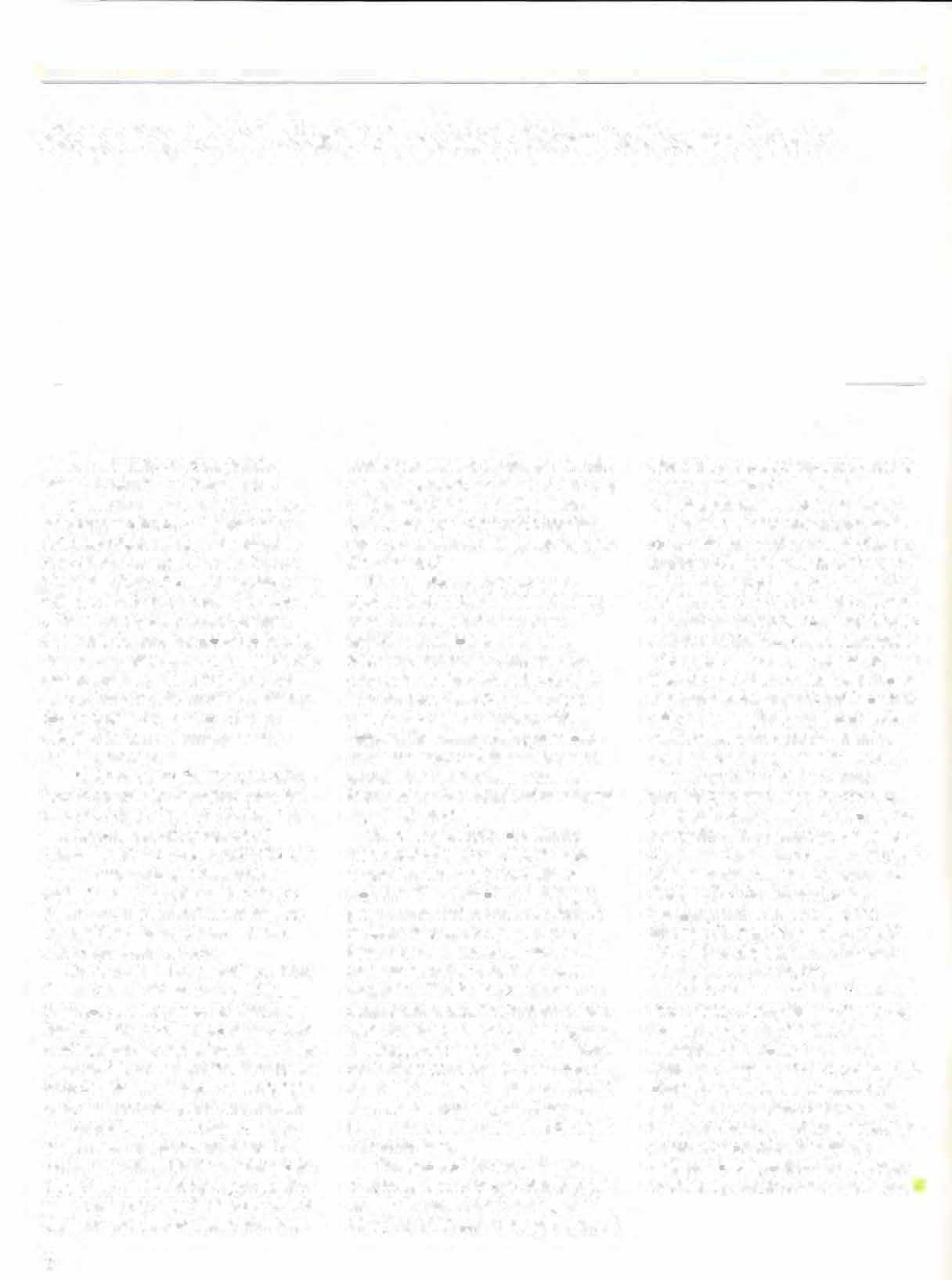
electronic gates the cows can be herded to the milking parlor and milked, requiring the labor of only one person.
The tie stall area accommodates 48 cows which are tied-up at feed bins in a traditional dajry farm fashion This setup will be used primarily for nutritional studies. Each cow can be fed a different mix and monitored by comp uter. The tie stall area of the barn can be converted to a free stall-style barn, if needed, Manure £1om the entire barn is deposited into an eight-month holding tank and is periodically and strategically spread onto fields which reduces the need for chemical fertilizer, cutting the overall farm cost.
The new dairy facility is made possible by a grant from the Common• wealth ofP ennsylvania and through the generosity of the fol lowing: American Cyanamid Company, Princeton, NJ; The Bedford Cou nty Parmers Association, Bedford, PA; Church and Dwight Company, Inc., Princeton, NJ; Mr. Emerson C. Frey, Millersville, PA; Mr. W. B. Dixon Stroud, Media, PA; and Wawa. Inc., of Media, PA.
Penn's Center for Animal llealth and Productivity at New Bolton Center, the School's large animal facility, was established in 1986 to implement teaching, research and service programs djrected toward the improvement of health and productivity in food animal herds and flocks. The focus of CAliP Is improved production through the maintenance of physical and economic heallh in the whole animal population.
Transplanting Brain Cells Shows Promise for Treating Some Causes of Mental Retardation
Researchers from the University of Pennsylvania School of Veterinary Medicine a.nd Harvard Medic<:�! School have successfully treated in mice brain lesions which may c0ntribute to mental retardation. The results were published in the March 23 issue of thejournal Nature.
The researchers transplanted healthy immature brain cells into the brains of young diseased mice. As the mice aged, the donor cells planted themselves throughout the brain, secreted a missing enzyme, and appeared as normal components of the central nervous system. This resulted in a widespread correction of the disease process. This strategy was successfully accomplished by John H. Wolfe, V.M.D., Ph.D., of the School of Veterinary Medicine at the University of Pennsylvania in Philadelphia, Evans Y. Snyder, M.D.• Ph.D.. of Harvard Medical. School and Children's Hospital in Boston, and colle<:�gues.
"The immature brain cells that we transplanted Into the diseased brains matured into normal brain cells. Apparently, these young cells, whose mature form was still undetermined, migrated into regions of the brain and developed into the appropriate cells of each region," said Evan Snyder, of the departments of
Neurology and Pediatrics at H�rvard and Children's Hospital.
The researchers have been studying mice with a disease called mucopolysacchari<.losis type VII. This is the animal model forthe human disease called Sly disease which afflicts fewer than 1 in every 100,000 humans. Because of an inherited deficiency of an enzymecalled bela glucuronidase, substances called glycosaminoglysanas accumulate in the brain and other tissues where they cause damage that leads to a progressive and ultimately fatal degen· erative disease accompanied by mental retardation. Sly disease belongs to a broader group of inherited diseases characterized by defects in the breakdown of biomolecules, and which affect approximately 1 in every 1,500 humans.
To correct this deficiency in mice, the researchers 1ransplanlcd a cell line of neural progenitor cells into the cerebral ventricles within the brains of the newborn mice. By the time the mice reached maturity. the donor celts which secreted the missing enzyme, had engrafted throughout the brain nnd appeared as normal constituents of the central nervous system, resulting in widespread correction of the disease
Elizabeth R. Moran Honored
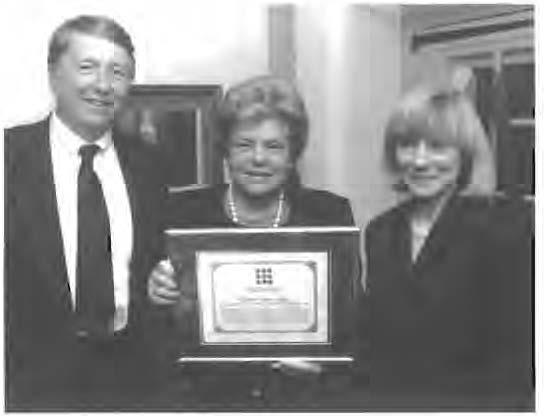
The School honored Elizabeth Ranney Moran during a special dinner in May. Shown here are Dean Kelly, Mrs. Moran and Mrs. Kelly. Mrs. Moran was presented with the following citation:
In recognition of your generous spirit and great devotion to the equine athlete
Your insight mto the needs of the horse industry, your commitme1ll to so many of its worthy causes, and yourjoy in all aspects of the spor1 horse make you, Betty, an inspiration to all equine enthusiasts. }'our gracious philanthropic efforts 111 support of Nevv Bolton Center have left an indelible mark on NBC faculty and facilities through the Moran Hearl Station: the Surgical Suite and Creme Fraiche Nursing Station,• through the Allam Professorship,' and through research, especially in sports medicine and comparative orthopedics. The Center and all of us personally are indebted to you for your outstanding and steadfast leadership and immeasurable kindness in support of programs for /he care of horses.
process. This may be i'l model for treating other genetic diseases alft•cting the brain or delivering other types of therapeutic substance<> to the brain in other types of diseases. It i� the first report of using these novel vehicles to treat a widespread genetic central nervous systum disease.

Many metabolic diseHses of the central nervous system do not respond to treatment because the blood-brain barrier blocks the entry of dru�s and therapeutic molecules in the brain. One way of gettingaround this dilemma is to transplant healthy immature nerve cells, or "neural progenitor cells" directly into the brain.
1-cven mice with transplanted cells that l1ve<.l to an old age showed a dramatic absence ofpathology in the brain, indicating a permanent improvement. "Someday we would like to translate what we learn from these mice to humans, but we still are far away from that,·• said John H. Wolfeofthe Laboratory of Pathology and the Section of Medical Genetics at Penn's Veterinary School. Jt will entail a better understanding not only of the diseases that cause mental retardation, but also the basic biology of the immature donor nerve cells, cautioned Wolfe and Snyder.
Veterinary Volunteer
Veterinarian Joseph Uaydos, V'94 and his wife, Julie. Brunnet; emharke.d for Bulawayo, Zimbabwe last September for a year-long stint us voluflll!ers at the Chipangali Wildltfe 'Trust. Biologist Vivian Wilsotl and his family founded Chipangali more than 20 years ago as a cewer for wildlife rehabilitation, research and the captive breeding of endangered Africa!I animals. Unable to afford the "luxury" of a permanent veterinary program, the Wtlsons accepted a proposal by volunteers Joe andJulie in con;unction with the Philadelphia Zoo':, ONE WITH NATURE program to conduct a pilot volunteer project..
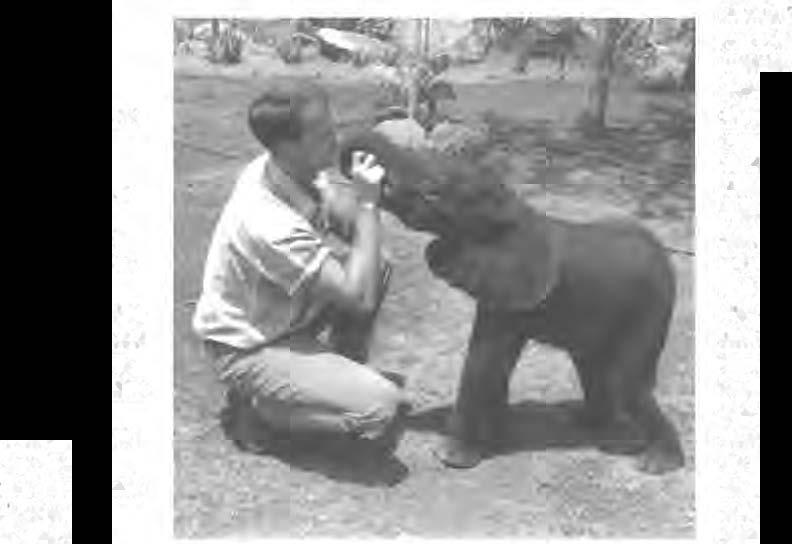
When I first imagined working as a veterinarian at the Chipangali Wildlife Trust, I really didn't know what to expect. Finishing my last days of clinics at the Veterinary Hospital of the University of Pennsylvania, I wondered what it would be like to work in Zimbabwe. I imagined spinning micro-hematocrit tubes on Lan.d Rover cooling fans and having to re-sharpen disposabl e needles to keep from running out. Occasionally, l even wondered if I would have any drugs to use. I once visited a rural health clinic in Tanzarua where the physician' s on ly drug was aspirin. She gave it for machete wounds, fungal infections, anxiety attacks- you name it.
Fortunately, conditions were not as primitive as I had scared myself into believing. Although Chipangali has not had a resident veterinarian since its inceptionover20 years ago, many things were already in pl.ace to facilitate my wock here, The Wilson family has done an amazingjob of providing top-notch care fortheir animals without the benefit of a veterinarian.
After arriving and evicting the rats from the dormant veterinary clinic and laboratory, 1 was ready for work. My first patient was an injured vervet monkey. Someone at a local farm had found the
monkey lying under a tree with :l large wound to its thigh. It was an old wound and the infectionbad obviously spread through his body. After anesthetizing the monkey, an intravenous drip was :.larted and the leg was scrubbed for surgery. All the old infected tissue wa� removed and the skin was stitched closed lfe didn't seem to mind the bandage on his leg, but he sure hated the daily antibiotic inject ions.
Chipangali functions as the wildlife rehabilitation centerfor Zimbabwe. Animals like the little vervet monkey
diseases that could be tran.smitted to other wild animals. I also tattoo all relca!"ed animals so we know iftheyhave become nuisances or cannot survive on their own. Since my arriva l we have released a troop of 27 verve! monkeys. two hedgehogs, three genets, seven barn owls, a gabar goshawk, and a bush squirrel. Soon we will be releasing a troop of 18 baboons and nine blackbacked jackals.
arrivealmost on a daily basis. Some have been shot, others hit by cars, attacked by dogs, or just found orphaned. lt still amazes me the distances people will travel to bring animals to Chipangali. One day a woman who had driven five hours brought us an injured secretary bird. Another time a man walked 20 kilometers through the bush to bring in a I itter of three orphaned black-backed jackals.
Many of the animals brought to Chipangali are later released back into the wild. It is myjob to examine them prior to release to be certain they are capable ofsurviving on their own and that they are not carrying infectious
Animals that cannot be released are kept here at Chipangalr. Hare captive animals are encouraged to breed and behavioral research is conducted. fhousandsof people <1 year visit the park 10 see African wildlife up close and learn about natural history. Caring for Ihe resident animals is a timeconsuming task. All animals receive routine vaccinations and dewotni.ings. Also, like anywhere animals are kept, emer· gencies arise. Just last month I arrived at work to find that one of the spotted hyenas had chewed through its enclosure and into that of the neighboring lion. Maybe there was a leftover bone he wanted, or maybe he was just tired of being in the sume old pen. Needle�s to say, the lion was none too happy about having a new cage mate, and proceeded to give the hyena quite a beating. Surprisingly, the hyena held its own. I still spent over an hour cleaning and stitching up claw wounds. but would certainly have expected much more damage to un animal only a quarter the size of its auacker.
Life as a volunteer veterinarian is not often easy or glamorous, but it is certainly exciting for me to assist in the development of a permanent veterinary cate program at Chipangali. This story would be incomplete, however, if l didn't mention my wife, Julie. She has put her career on hold for a full year to be my constant companion, keep me laughing. and share in the challenging work.
By Joseph G�ydos. V'Q4 Repnnl�d with permission from l.OO·ON£. a rub· lictuion of The Zoological Sociely of Philadelphia.
Penn Researchers Develop Tech1zique to Transplant Reproducti);•e Cells
A team of researchers at the University of Pennsylvania has developed a technique for transplanting immature sperm cells directly into the testis of infertile animaJs, and demonstrated that the immature cells will grow and develop into normal mature sperm. The technique holds great promise for biomedicalscience as scientists seek new tools to eradicate genetically transmitted diseases.
The process was developed by Dr. Ralph Brinster, Richard King MeiJon Professor of Reproductive Physiology at Penn's School ()f Veterinary Merlicine. The research was rf'.ported in two articles in the November22, 1994 issue of the Proceedings of the National Academy of Sciences. Working with mice, Brinster and his team have found that the donor cells will multiply and re-populate the recipient's testis, giving the animal the ability to transmit the donor's genes tu offspring.
The technique focuses on a population of primitive cells known as spermatogonial
stem cells. These cells replicate throughout the life of the animal. from birth to old age, giving rise to cells that develop into mature sperm cells. Brinster's work now makes this population of cells available for experiments in ways not possible before.
"These cells undergo self-renewal throughout life, and have the ability to transmit genes to successive generations. fn this sense, they can be thought of as immortal," Brinster said. "Learning how these spermatogonial cells differentiate and the factors th�t influence the directi()n they take can teach us about normal and abnormal de,;elopment, and thereby contribute to our understanding of disease," he said. According to experts, Brinstcr's findings will allow scientists to gain insight into reproductive cell development.
"Dr. Brinster's work willprovide new impetus for studying cellular control of spermatogenesis and for manipulating the germ line of farm animals. I anticipate that

Harold H. FehrEmergency Service Pavilion
On December 7, the Harold H. Fehr Emergency Servic� Pavilion at the Veterinary Hospital of the University of Pennsylvania was dedicated. Made possible by a major planned gift by Harold H. Fchr, a 1923 graduate of the University's Wharton School, the Emergency Service was completely renovated to meet the demands of the high case load.

In 1981, when VHUP opened its doors, the Emergency Service anticipated handling about 400 cases annually. Since then, the caseload increased to morethan 8,000 patient visits per year, making VHUP's E.S. the busiest such service in an university veterinary teaching hospital in the nation. As the case load grew so did the number of nurses, residents and clinicians, and as technologies advanced, more pieces of sophisticated diagnostic and treatment equipment were added. Space became tight and the area needed to be enlarged and renovated to comfortably accommodate the patient load.
Plans were prepared to change the layout of the Emergency Service. to enlarge the treatment room, and to create an isolation ward accessible from the treatment area. Space was gained by eliminating 11
corridor and reducing the size of three exam rooms.
During the renovation, Emergency Service took over a number of exam rooms and thetreatment room in the clinic area of VHUP. There was no downtime for E.S.: patients arrived at all hours of the day and night and were treated in temporary quarters.
By the evening of December 15 owners and patients were using the new waiting
these investigations will set new directions for research at the School of Veterinary Medicine," said Dr. Alan Kelly, dean of Penn's School ofVetcrina•v Medicine. '·We arc immensely proud otDr. Brinster. His re£carch is extremely exciting and has very important ramifications for veterinary medicine and animal agricvlture," Kelly said.
For his contributions in establishing methods to grow and manipulate germ cells in the laboratory as well as his use ()f this research to study development, Arinster has receiver! many honors, including election to Memhership in the National Academy of'\ci�nces. In addition. he has received the New York \cademy of Sciences Award in Biological and Medical Sciences, the Distin�J.uished Service awnrd of the U.S. Department of Ag•iculture, the Pioneer Award from the International Embryo Transfer Society, and the CharlesLeopold Mayer Prize. the highest prize of the French Academy of Sciences.
area and care was provided in the brand-new larger treatment room. The Harold H. Fehr Emergency Pavilion now rivals the most advanced trauma/emergency treatment and diagnostic center in human medicine.
The C:.mergenc) Service at VHUP. one the busiest areas of the hospit\11, is the cornerstone of the Center for Veterinary Critical Care (C.V.C.C.), the first wholly integrated small animal critical care unit in the world.
Alumni Day 1995
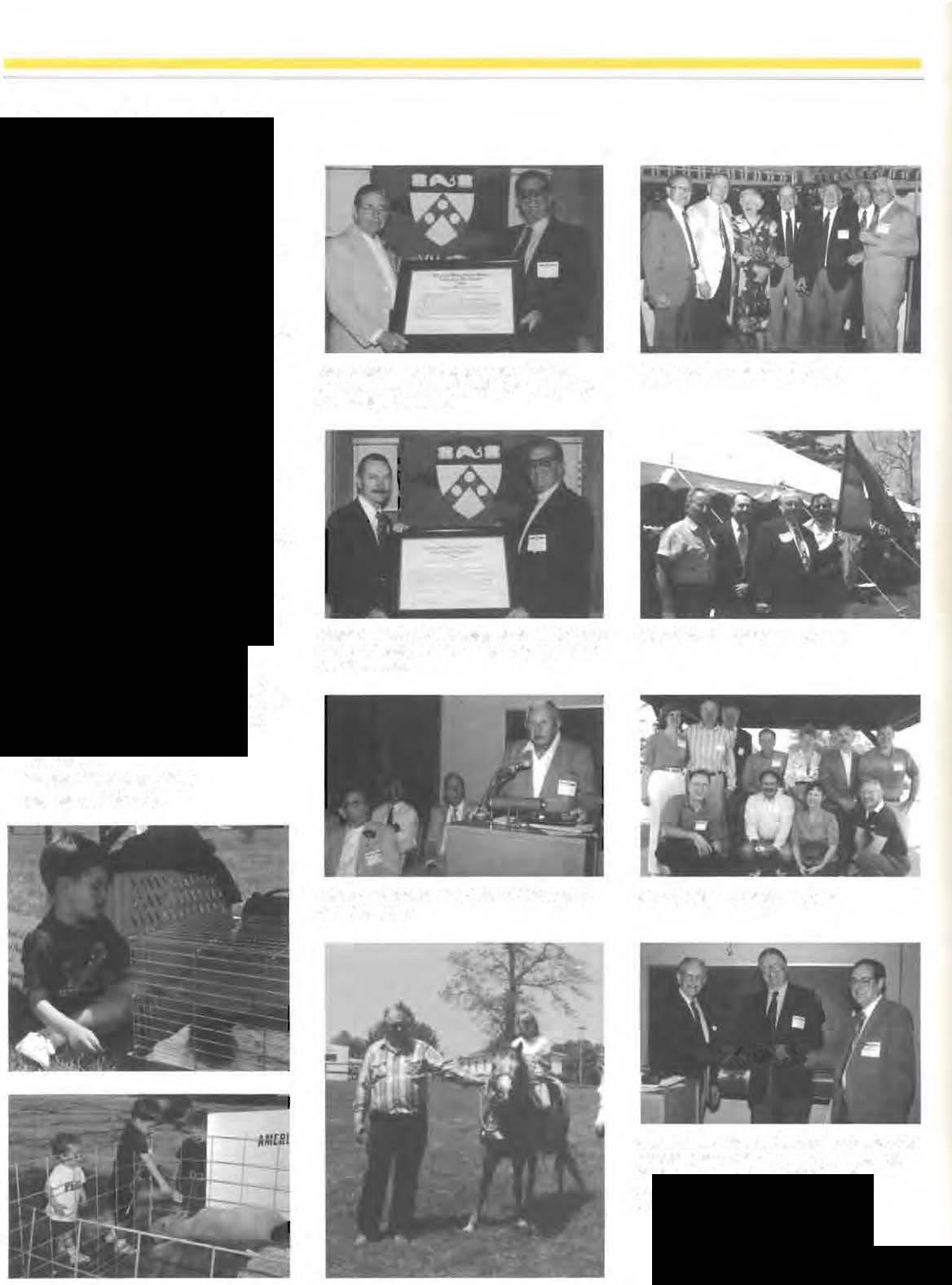
Dear Alumni:

I wotilci likP- ro i3ke. 3 !110il'1e.nr ro thank all those alumni who attended Alumni Day Weekend at New Bolton Center on May 19th and 20th, 1995. The feedback has been overwhelmingly positive. The Cocktail Party on friday night, hosted by Dean Alan Kelly and Mrs. Susan Kelly, was very well received and relaxing. Over 150 people attended. On Saturday, we had over 300 people attend the festivities at NBC. The most exciting aspect for me was the large number of younger alumni with. their children. The pony rides and sheep herding demonstrations were a huge hit with the kids.
Special thanks to Dr. Jack Bregman, Chairman of the Alumni Day Committee, Dr. Dan Bleicher and Susan Barrett for their hard work in helping make this Alumni Day the best [can remember in the last ten years. I can only hope this is the beginning of bigger years to come.
Again, thank you to those who supported Alumni Day 1995. Perhaps those who didn't or couldn't make it this year will be encouraged to come next year.
Sincerely.
Stephen W. Sykcn, V'86 President, V.M.A.S.Dr. Detweiler Honored
The School ofVeterinary Medicine of the University of Pennsylvania recently honoreu Dr. David K. Detweiler. Pwfc.:ssor Emeritus of Physiology and Animal Biology, by presenting to him the Centennial Medal. rollowing i�> the citation:
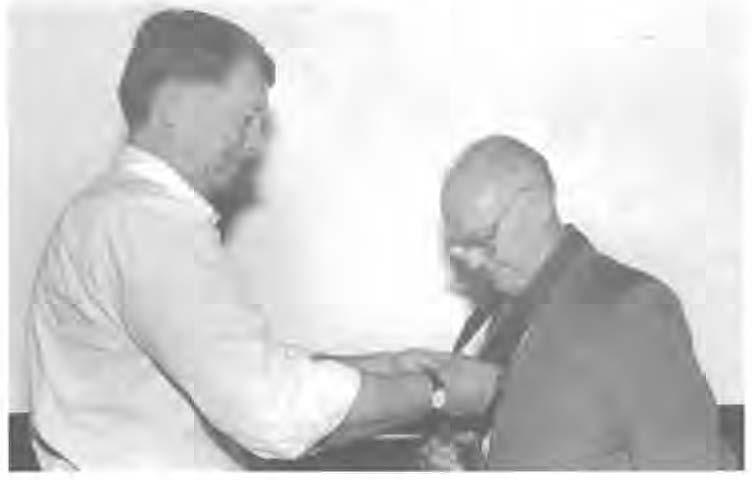
David Kenneth Detweile1; distingwshed cardiovascular physiologist, research scientist, educator, and Father of Veterinary Cardiology, your colleagues and your school salute you.
G�aduating from the University of Pennsylvania School of Veterinary Medicine with acade111ic distinctio11 in1942, you immediatelyjoined the facuiLy, at a time 1v/len the School was at low ebb infinancial support and facuiLy size, and early on you assumed a demanding admimstrative and teaching role as acting /lead of Physiology and Pharmacology.
Despite teaching responsibilities that today would be considered inconsistent with any other academic activity. you found the time to initiale research in comparative cardiology, laying the groundworkfor what 1vas 10 become an entirely new area of specialization in veterinary medicine. Reading widely and making cOillact with cardiologisls in human medicine, you recognized the potential for applying principles of cardiovascular physiology to the diagnosis of heart disease in animals. Acquiring electrocardiogtapluc and other equipment wherever you could, you soon
began to spend rime in the clinics, examining a11d 1reating animals •vith signs suggesti1'e of heart disease; you published thefirst descriptions of the clinical and pathologrc signs of a number of forms of heart disease ill dogs a11d horses. !111957, you convinced the Vational lnstitutes of Health to fund a study of the epidemiology of cardiovascular disease in dogs, thefirst such study e1·er conducted in animals. This work provided detailed descriptions of the frequency and types of heart disease in dogs and led in1960 10 a large program project grant wider which you established the Comparaltve Cardiovascular Studies U11i1. Dt•aling broadly w11h basic cardiovascular hemodynamics and electrophysiology as well as heart disease, the Cardiovascular Studies Unit, under your directio11, a/Jowed the School to attract a number of faculty members who ha11e contributed in major 1vays over the years to the teaclu11g a11d research missions of the School, and trained a generation of veterinary cardiologists who aided in the development of comparative cardiology 111 the United States and abroad.

During this extraord111ary period of development, sparked by your imagination and energetic pursuit of education and research in comparalil'e cardiology, the school established thefirst residency in veterinary cardiology as well as offering other trai11eeships in cardiovascular research. The young veterinarians trained
111 these programs led the way to Board Certij/cation in Veterinary Cardiology. Not content simply to pursue research and to train others 111 your ownfield of cardiovascular physiology and cardiology, in the JQ50's you established and chaired u graduate group for the VeterinarySchool within Penn's Craduate School of Medicine. This widened rhe scope of graduate-lePel education wi1hin the school and provided formal training and research opportunities in the School of Veter111aryMedic111e and !he Sc:hool uf lvledidne fur veterinuriam interested in a variety of specializedfields of medical science, includ111g cardiology, neurology, ophthalmology, and internal medicine. These programs played a major role in accelerating clinical specialization and research in comparative medic111e at Penn, de11elopments that made Penn the pioneer instillllion and 1vorld center for these activities. As its chairman f(}r over 30 years, you noarished und sustained the original Graduate Group and, as the ttdes of graduate education changed, successfully converted it to what is ILOIV called Graduate Group 111 Colilparatm' .1/edical 'lciences in the Graduare School of Arts and Sciences.
During your distinguisla•d career, Da1'e Detwede1; you have receil'ed many awards. i!1cluding honorary doccorates from veterinary schools in the United States and Europe. and election to the Institute of Medicine of thr >\ ationalAcademy of Sciences. Today, your OIVn school invites you to accept the Unil·ersiLy of Pennsyll,ania Veterinary School Centennial Medal. Conceived by the a111ard commitlee you chaired in 198.f at the time of celebration of tire School's one-hundredth yea1: it is o unique a111ard in l'elerinary medic111e, originally designed to symbolize Penn's recognition of the mosl outstanding leaders in 1·etetinary medicine outside the school. This tdea. to recognize others outside our OIVII hulls, is consistent with your tendency to think generously 0/1(/ in the wulest context. Today, in bestoiVing the Ce111e111ual Medal, 1ve recognize you not only as one of the most semmalfigures in the lriSiory of our profession. but as one of our ow1Jone of the most talented a11d productil•e sctentists, educalors. and ucademic statesmen in the I/O-year hiscory of1h11 school.
Prostaglandin SynchronizationProgram
Dairy farmers lose millions of dollars each year be.causc optimum calving intervals are not achieved. lt is proposed that a cow should call'e every twelve months for maximum profitable production of milk. But poor heat detection and low first service conception rates contribute to longer calving intervals.
Several years ago a stud) conducted by Or. Charle� Love at the Penn's School of Veterinary Medlc.ine showed that these intervals could be shortened by injecting postpartum cows at regular intervals with prostaglandin. Prostaglandin. a naturally occu rring hormone. shortens interval� between heat cycles.
Drs. r'erguson anu Calligan of Penn's Center for Animal Henlth anJ Productivity took these findings and developed an integrated breeding management program to increase the reproductive efficiency in a dairy herd. They haveshown thnt J program of prostaglandin injections at two week intervaJs initiates and synchronizes estrus in cows and shortens calving. intervals. Cows respC\nd to PC injections only when they are between days seven to 17 (diestrous) of a 21-day estrus cycle. Seventy five to 95% of diestrus CQWS will be in estrus three to five days following a PC injection. In the remaining cows estrus will be on day two or between days six to 10 following the injection. By random chance in a group ofcycling cows 52% of cows will be diestrous on any given day. An additional I 5% of cows will be proestrus, one tQ three days prior to estru:'i. 5% will be in estrus, and 29% of cows will be in metestrous (one 10 si.x days post estrus). If all cows in a random group of cows were given an injection of PC, approximately TJ% of the cows will appear to be in estrus one to five days following injection. Depending on the heat detection program. various numbers of cows will be observed in estrus and insemi-
nated following the PC injection. Cows in metestrous will no! respond and will not be in estrus following the injection.
Fourteen days later, 95-98% of cows in this random group of cows will be diestrous or proestrus. A second injection of PC 14 days following the first injection will apparently induce estrus in 95-98% of cows. Cows metestrous at the first injection and cows in estrus following the first PG injection will be diestrous nt the second injection. Thus. synchronizati0n of estrus will be high following a second injection 14 days
new cows who now have reached the end of VWr. Cows receiving a second PO injection may be inseminated on standing estrus or an appointment at 80 to 104 hours post injection. Cows are re-bred if seen in heat 21 days later.
Cows are checked forpregnancy 32 to 40 days postbreeding. If open, they reenter t he PC pool
Prostaglandi n synchronization provides a number of benefits: more cows are in heat at the same time. increasing expression of estrus; labor may be focused to watch for estrus at
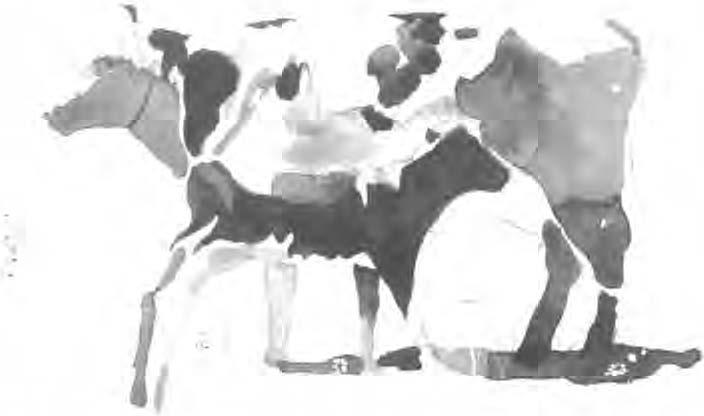
after Ihe initial wjection. Synchronization will be almost 30% higher using a 14 day rather than an ll day schedule.
Penn's researchers recommend that farmers establish a voluntary waiting period (VWP) for the herd. They routinely recommend 50 days post calving, but this may vary, depending on the goals of the farm. As cows reach the end of vwr, assign a day of the week to give PC, for example, Friday. Cows at or past the end of VWP each arc given a PC injection on this Friday. Heat detectors are placed on their back. From Monday to Friday following injection, about 70% of these cows should be in standing estrus and i nseminated. Cows not inseminated are scheduled for a second PC injection 14 days later. fllong with
known times; increased likelihood that cows are in heat following the second injection, impn,wing the efficiency of timed insemination; fewer days to fi(St breeding; synchronization of pregnancy exam to always find open cows prior to 12 day5 postbreeding, reducing days between breedings.
Prostaglandin is approved in dairy cows to initiate and synchronize estrus. Relatively inexpensive and easy to administer, it is metabolized rapidly by the cow and has no side effects on the animal. The hormone enables the dairy farmer to control the length of the calving interv<:ll in his cows and to red uce his veterinary costs because fewer visit!i are needed to perform pregnancy checks 10 a synchronized herd.

1994 Saratoga Benefit
In December, eprescntatives ofA WECKF.f\'.0 1\l OLD SARATOGA presented a check in the amount of $11 2,000.00 for New Bolton Center to Dr. Alan Kelly, deitn ofthe Universit� or 'Pennsylvania School of Veterinary Medicine. The check represented the proceeds of the very successful benefit held in Saratoga in Augus1. Monies will help support the building of a new wing for the Comparative Or1hopedic Research Laboratory and for Sports Medicine Endowment.

A WEEKf.ND 1'1 OLD SARAI OGA is a non-profit organization which sponsors four days of carriaging in Snratoga each August. The weekend consisted of a country carriage drive, a drive to a polo match, and a carriage parade at the Saratoga race course. Activities culminated in "An Evening in Old Saratoga." a black-tie gala and silent auction held al the Gideon PutnamHotel in the Saratoga Spa State Park on August 8,
chaired by Mrs. John R. Landan, Jr., Chester Springs, PA. More than 290 people attended the event and enjoyed the music by the Robert Hardwick Orchestra. Prior to the gala, a champagne reception was held at the Saratoga Springs home of Miss Beverly R. Steinman. Lancaster, PA, for underwriters and patrons. This was the second year that the gala has benefitted New Bolton Center, the large animal facility of the Veterinary School in Kennett Square, PA
Chairperson of the board of A WC[KDJD IN OLD SARATOGA is Mrs. Lawrence L. Ensor, Jr., of Philad elphia. Pt\, and president of the organization is �r. John R. Landan, Jr. of Chester Springs, PA
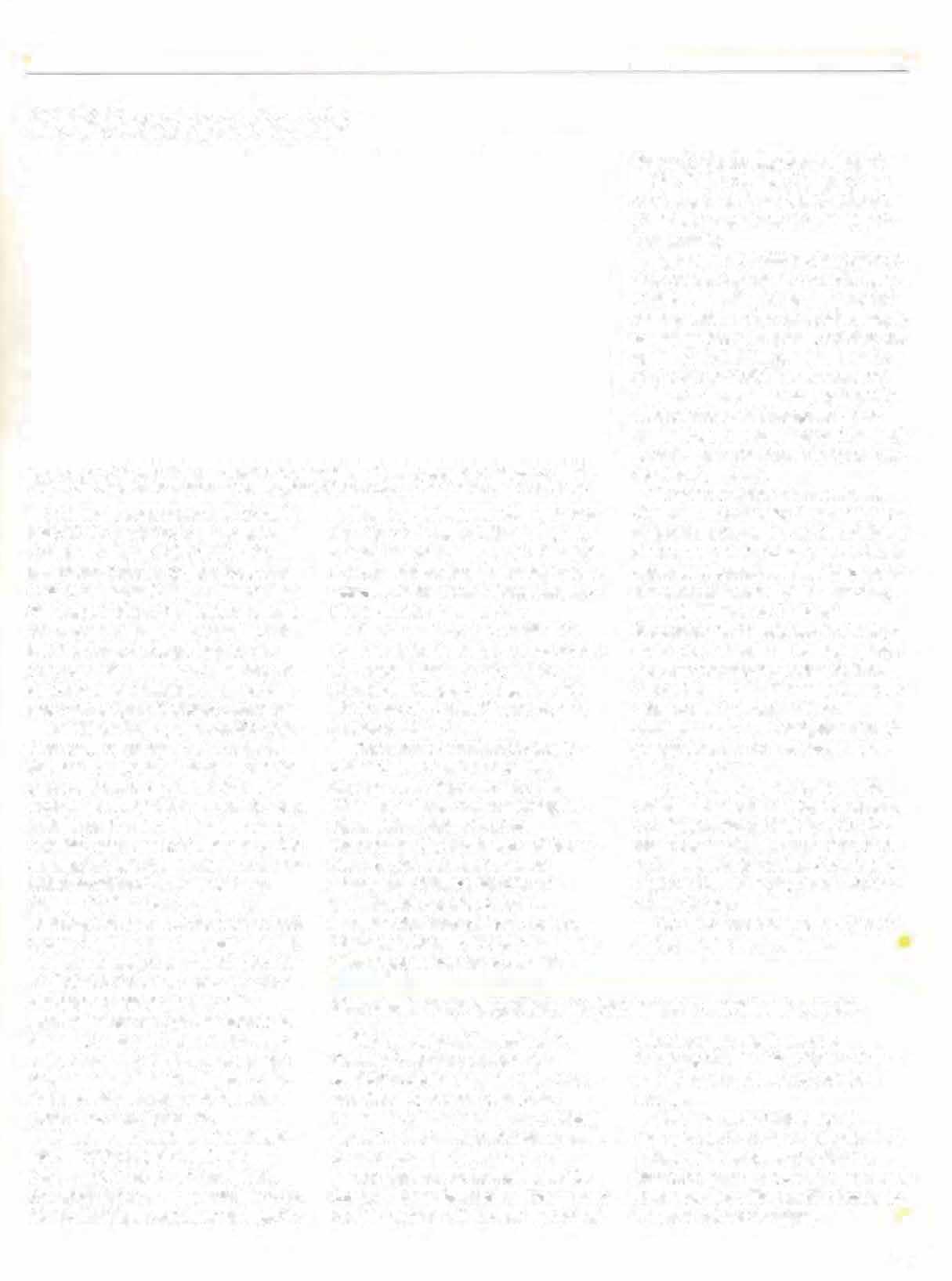
Honorary chai rperso ns of the gala were \trs. Harry W. Lunger, Wilmington DE, and Mr. Dinwiddie Lampton, Jr., Prospect, K). The silent auction was headed by Mrs. J�rnes A Orsini, Kt>nnP.tt Squ�rP., �nd M r>; Hector Alcalde, Arlington, VA
Members of the Gala Committee included such local residents as Mrs. Richard L G. Jones, Unionville, PA. and Mr. and Mrs. Michael Rapp, Downingtown, PA. Mr. Gregory L. Landis, Wayne, PA, also assisted the Gala Committee.
The honor11ry committee for the :'\Jew Bolton Center benefit include<.l \1r. Seymour Cohn, New York, NY, Mrs. Walter M. Jeffords, Andrews Bridge, PA, Mr. and Mrs. William C. I .ickle, Montchanin, DE. Mrs . J. Maxwell Moran, Paoli, PA. Mr. and Mrs. Vincent B. Murphy, Far Hills. NJ, Miss Beverly Steinman. Yfr. and Mrs. Judson L. Streicher, !'lew York, �Y. Vl rs. Anne F. Thorington, Malvern, PA. Mrs. Jacqueline Mars Vogel. Bedminster, NJ, and Mr.
George A Weymouth. Chadds Ford, PA.
New Bolton Center 's George D. Widener Hosp]tal for Large Animals and the Field Service treat more than 25,000 animals annually.
Approximately l,SOO of these equine pa· tients are seen through the Center of Sports Medicine, a multi-specialty group encompassing clinicians from orthopedics, surgery, C<lrdiology, internal medicine. radiology and nuclear medicine. The contribution to the tquine Sports Medicine endowment will enable the Center to pursue programmatic research such as the investigation of the equine airway smooth muscle and the development of new ultrasound techniques to detect tendon problems.
The other recipient of (he funds, the Comparative Orthopedic Research Laboratory, will use the monies for the building of the new wing of the Kline Center to house expanded laboratory facilities for comparativP orthnpP.dic- re"c:>-'�rc-..h. This l�hor�tory, under the direction of Dr. David Nunamaker, has investigated the development of bone failure and training regimens that show promi se of reducing the incidence of bucked shins in young horses. Another area of investigation is the <.levelopment of new techniques and surgical approaches to fractu re fixation to improve the outcome.
"The School greatly appreciates the dedication and hard work by the members of A WEEKEND IN OLD SARATOGA who made possible the outstanding event in Sara10ga for 1\�.;w Bolton Center's benefit," said Dr. Alan Kc.:lly, dean of the Veterinary School.
The 1995 benefit took place August 7, and again was very successful.
$445,000from Raymond C. Firestone Charitable Trusts
The University of Pennsy lvan ia ·s �chool of Veterinary Medicine has received $445,000 from charitable trusts established by the late industrialist Raymond C. Firestone. He was a lifelong equestnan and had supported the School's research programs for many years.
The funds arc earmarked for the Dr. Loren f-1. Evans Research and f:.quipmcnt Pund. The grant will be used for comput-
erization u pgrading in th e new Scintigraphy unit at New Bolton Center and for equine research by resident facu lty
The grant to the University of Pennsy l van ia is one of 10 to institutions nationwide. Firestt>ne.. who died last September, was the retired chairman and chief executive officc.r of The Firestone Tire and Rubber Company.
School Board ofO"crSI?I?rs 'member Clrrisrilu! Connelly (I), o11d Dr. Kelly accept rile checkfromA W£F.KEND IN OLD SARATOGA represrmraltves, Mrs. J(J/tll R. l.o,dnn, Jr. ond Mr� Ln•vrencc £. Ensor, Jr. (r)Graduation
Commencement exerci!>cs for the Class of 1995 were held on May 22, 1995. The Commencement Address was given by Dr. Michael S. Garvey of the Animal Medical Center, t\cwYork. NY.
Dean Alan M. Kelly pre!>ented the diplomas to 75 women and 28 men. He was assisted in the presentation and hooding ceremony by Assistant Dean
Jeffrey A. Wortman, V'69, Associate Dean Charles D Newton, and Or. Mark E. Haskins, V'69.
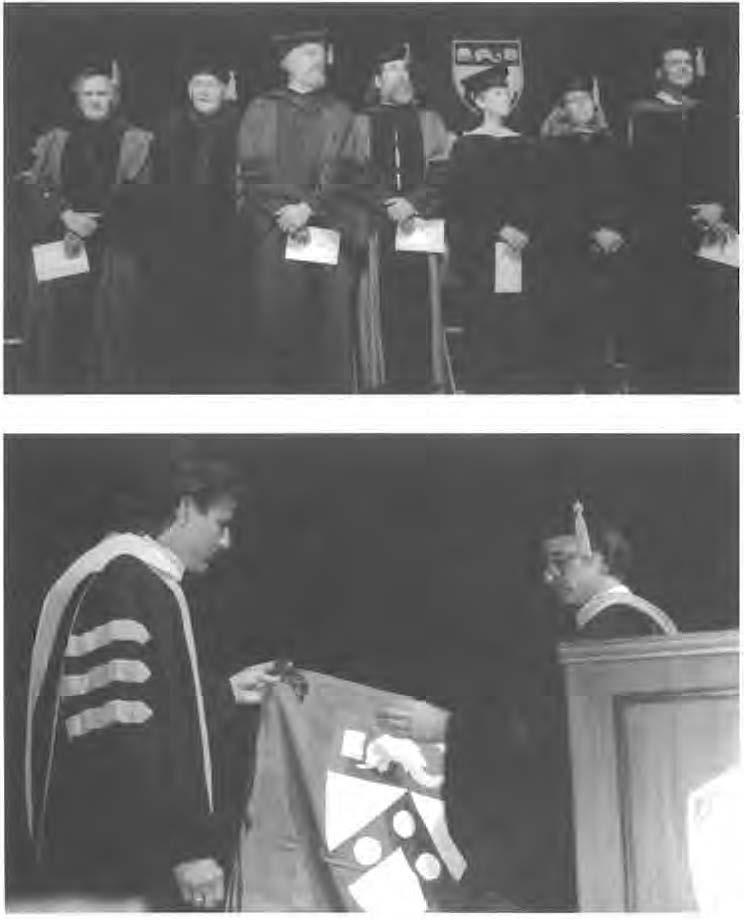
Dr. Jack Bregman, V'66 and Dr. Ellis Rubin, V'62, presented diplomas to their children, Eric Michael Bregman and Deborah E Rubin. Dr. Stephen Syken, V'86J president of the Veterinary Medical Alumni Society. presented the Class Flag to Dr. Steven Eugene Suter, V'95, class president. The Veterinarian's Oath was administered by Dr. Joseph D. Slick, V'53, president of the Pennsylvania Veterinary Medical Association.
Class of1995
Margaret Ann Anthony""
Nancy Lea Ashley
Archie Edwin Barkdoll Ill•
Bonnie Claire Berman
Dawn Norma Binder
Kenneth D. Boehm
Michelle Colleue Boyden
Nancy Jo Brady
Eileen Marie Brandon
Eric Michael Bregman
Kimberley Lynn Bresee
Mary Amour Brya01
Debra Kay Buchanan
Christine Angela Caserta
Kristen Carol CasuIIi
Ann Margaret Caulfield
Larisa Clare Chavin'"•
Carole Ann Chiaravallo
Katherine Ann Chronister
Joshua Hasbrouck Clay •
Blaine Patrick Connor
Lisa Ann Corsello
Amy Louise Crawford
Jamie Eugenia DeGarmo
Lynne Terese Denyer
Lisa Jane DiPaolo-Fischer
Ellen Marie Dziedzicki
Jenifer Ann Farrell"•
Eileen Frances Fisher
Derek Lewis Fried
Jean Ogden Frost
Lawrence David Gallagher
Michelle Diane Gels-Hawks
Lynda Carol Green
June Suzanne Hacker
Kathleen Marie Hall
Christopher Lee Hallihan
GregorZvi Havkin
Kristin Noelle Heffner
Eileen Heldmann•..
Carsten Wolf Henkel
Deborah Elaine Holler
Carmela Jo Holl
Harvey Edward Hummel
Hubert-Jan Karreman
Patricia Maria Khuly•
Nancy Jo Kreger
Kathryn Elizabeth Kropp
Jill Overmier Kulig
M1chele Joan Leso
Sheila Hogan Levie
Ann MacCormac
Lori SpencerMann
Jeanine Louise Mantione•
Deborah Lynn Mara
Beatrice McCabe
James Michael McNamara, Jr.
Todd William Meister
Mary Elizabeth Morgan
Catherine Hall Mullin
Robert Thornley Neff, Jr.-�

Sharon Bridget O'Toole
Cristian Ricacdo Palma
Krista Ann Price"•
Jcr�my Prupas
Cynchia Oakes Pyrih
Ji-Yeun J{ha
Machew Ben Rice
Renee Dawn Richards
Teresa Mary Rieser
Kalht"rine Elizabech Rohrer
Deborah F. Rub1n
Jeffrey Cloydc Rubincam, Jr.
David Thomas Runk
Sean Kcich Salcsburg
Chriscopher Neil Scolli
Carolyn Mary Selavka
Linda Ann Shellon
Wendy Ariel Sh•ao
Kart'n Marie Shu ler•
Bndgel Pan1ela Sikkes
Kalhryn Mary Sneider
Juslin Andrew Soli
Mary Helen S1an1ch
Chriscine Mary Sceinmann
Susan Ba11man Swgan•
Sleven Eugene Suter
Sheila Swecncy-Gomc:t
John Hen ry Tcg-zcs
Dougla� Howard Thamm
Joanne Coce Thayer
Desiree A. Thomas
Alexander John Anlhony Travis•·•
Jodi Varley
Diane Vencrello
Su$an Wayne Yolk*"
E. Noelle Weeks
Laureu Kachleen Welch
Marcha Wehscer Wells•
Sharon Bon<J Wes1phal ..
Cachcrine Sharrer Wickerham
Melanie Sue Wilkin�
Simon Shih-Hung Yen
Summa Cum Laude
Magn» Cum Laude
Cum Laude
Award Recipients
LeonardPearson f'ri?.e
Alexander John Anchony Travis
J. B. L•ppincoll Prize
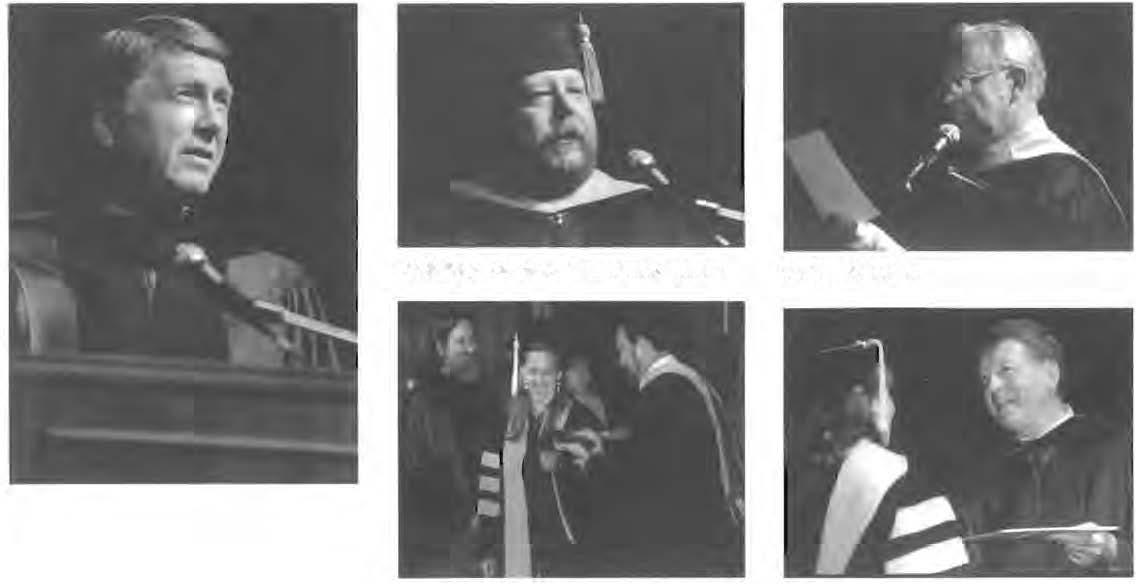

Krisea Ann Price
1930 Class Prize in Surgery
Eileen Hcldm�nn
Auxiliary to Ihe American V�terinuy Medical Associacion Pnze
Mary Amour Bryan!
Auxiliuy 10 che Pennsylv�nia Veterinary Medical Associacion Prize
K�ren Mar ic Shuler
1956 Class Medal for Achievement in P�1hoJogy
Krisla Ann Price
James Hazlill Jones Prize in Biochemistry
E•leen Heldm�nn
American Animal Hosp•lal Associalio n AwMd
Eiieen Heldmann
Merck Al'll•rds
Small Animal Award
Krisla Ann Price
Large Animal Aw�rd
Elle n Mane Dz•edzick1
Gtoorgc M. Palmer Prize
Lama Clare Chavin
Everingham Prize for Cardiology Margarec Ann Anchony
Large Animal Surg.ery Prize
Rober! Thornley \ldf,Jr.
Large Animal M1·dicme' Prize
Raben Thornley '-eff. Jr.
Morri\ L. Ziskind Pr1ze in Swine Medicine
Krislin "'oelle Heffner
Morris L. Ziskind Pri1c in Public Hcallh
Pa1ricia M;�ria Khuly
Purina Mills Award in Swine vfedicine
E. Noelle Weeks
Upjohn Awards
Small Animal Aw;trd
MMgaret Ann Anl.hony
Large Animal Award
Jamie EugeniO! DeG;trmo
Facully/SCAVMA Prize
Lori Spencer Mann
Field Service Award
Ellen Marie Dziedzicki
American College of VecerinMy Surgeons Pnzes
Small Animal Surgery Prize
Lynne Terese Denycr
Large Animal Surgery Prize
M�rlha Webscer Wells
American Associacion of Feline Praccuioners
AwMd
John Hemy T�gzcs
SeniorAward� Pre\liously
Announced
Ana1omy Prize
Eileen He ldmann
The Mikus Prize
Jnshua Hasbrouck Clay
American College of Veterinary Rad1ology Award
Kacherine Elizabech Rohrer
D1: ti-Uchod S. Con·ey, commencement speokerOr. Sllcrbyn W. O<>trlcb, \"63, was installed as president of the American Veterinary Medical Association at the 132nd annual meeting in Pittsburgh, PA. He i!'; the 12th V.M.fl. tn le::�cl the organization.
Or. Jn"cph l>. Slick. \ '$3, took office as president of the Pcnn:.ylvania Veterinary Medical A:>sociation in January.


Or. Adrian R. \1cu-rison, professor of anatomy, has been named to the [xtcrnal
the Lindback Award for Distinguished Teaching.
Or. Hurry Rozmiurck. University veterinarian and professor of laboratory <1nimr�l medicine, W:J!'; installed r�s vice president of the American College of Laboratory Animal Medicine at the annual meeting of the organization in July. In October of last year, Dr. Rozmiarek was the recipient of the Griffin Award, the most prestigious award given by t he American Association for Laboratory Aaimal Science. The award is annually given to an individual for outstanding accomplishments in the improvement of the care and quality of animals used in biologic and medical research. It is named after the late Dr. Charles A. Griffin, a pioneer in the breeding and maintenance of laboratory animals.
lJr. Jowpb Rwnntow:-.ki. \''82. received the J\VMA:> 1995 Practitioner Research Award at the .,�,ociation's annual meetin_�! in Pittsburgh in July. Dr. Rnmarnwski wa" rer.ogni7ed for hi<: contribution to a study of the cfh:ctivcness of feline leukemia virus vaccination carried out collaboratively with members of the University ofWashington's Department of Applied Mathematics. Dr. Romatowski has a fel inc practice in Seattle and is the author of a number of articles and a chapter on feline anesthesia in the book Feline Medicine and Surgery.
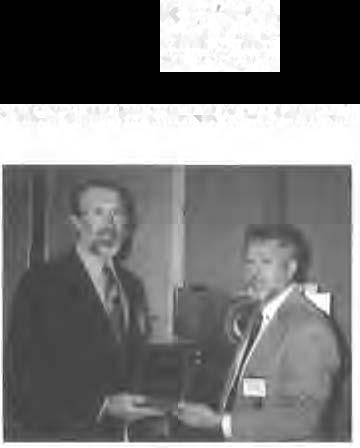

Or. uerl r:. Aronson, associate professor of pharmacology and toxicology, is the first rec1picnt 10 the ,\merican Academy of Vch.:rinary Pharmacology and Therapeutics S�!rvicc Award.
Scientific Advisory noard of theAir Force Office of �cientific Countermeasure� for Jet Lag and Sleep Deprivation. The Center is a consortium of laboratories at Harvard, Pcno and Stanford. Dr. Morrison was elected preside nt of the 'lational Animal Jnterest Alliance, an organization founded by two dog breeders to support the humune U$e of animals to improve animal welfare and educate the public about the difference between animal welfare and animal rights.
Dr. Donald A.l\ht. \''61, Robert R. Marshak Term Profe.<;sor of Aquatic Animal Medicine, was elected presidentelect of the International Al>sociation of Aquatic Animal Medicine at the recent annual meeting of the organization.
Dr. Robert \-\'a�babau, V'82, assistant professor of medicine, received
Dr. David Knight. professor of cardiology, was honored by the American Heartworm Society and received a Special Recognition Award for ''outstanding contributions to the knowledge of heartworm disease and for exceptional dedication to the American Heartworm Society.'' Dr. Knight is vice president of the organization and program coordinator for the society's symposia, held every three years.
Dr. Ounald f. Pt�ltersun. Charlotte :\cwton Sheppard Professor of Medica l Genetics, received the 1995 American Kennel Club Career Achievement Award in Canine Research. The award was presented at the AVMA convention in July. Dr. Patterson also was appointed to the scientific advisory board of the AKC Canine Health Foundation.
Dr. Peter Hand, \''61, professor of anatomy, organized the School's hosting of the 1995 Annual Meeting of the American Association of Veterinary Anatomists in July. Dr. Hand was recently elected president-elect of the American Society ofAcupuncture.
Ur. E. '\ell \luorc, profc��:or of physiology, was reappointed visiting professor of medicine at Johns I lopkins University Medical School and :tdjunct professor of medicine at Ilahnemann University. Dr. Moore received a grant from the W.W Smith Charitable Trust for research on defibrillation. In t he fall he presented a seminar at th<: llouston Electrophysiology Society on Ventricular Fibrillation and Defibrillation; he also presented medical grand rounds at the l niversity ofTexas Medical School.
I louston, TX. Dr. Moore gave a multimedia prese ntation on Mechanisms of Common Arrhythmias at a symposium sponsored by the College of Physicians and Surgeons, Columbia University, held at Lake Louise, Alberta I (e served on the faculty for the Cardiovascular Board Review Course for Electrophysiology, sponsored bv t he American College of Cardiology. He presented a tal.k on atrial fibrillation, sponsored by the :..'niversity of Southern \alifornia and held in Hawaii.
Or. GaJ'r}' Smith. associate professor of population biology and epidemiology,
Dr David Knight acccpnng the Award from illl! /I!IIUfiam Hea!lwQtil Soch!l.hpresented an invited lecture at the Pan American Conference ofVeterinary Science in Acapulco, Mexico.
Dr. Gerhard Schad. profes�or of parasitology, attended a World Henlth Organization meeting in Geneva, Switzerland, in December, as a consultant for the working group on hookworm diseases in women. lie also went to New Delhi to organize a hookworm research program in rural lndia.
Dr. l.£ooard Kra\•it:� V'J9. received the PVMA Outstanding Service Award for using his musical talents to provide entertainment at senior citizen recreation centerc;, churche�, hospitals, nursing homes and retirement facilities. Dr. Kravitz is a clarineti st and saxophonist.
Dr. R1chnrd OetwileT·, V'48, received the 1994 .,VMA Distinguished Veterinarian Award.
Dr. WC!..�Il!�' H. Tuwers, Jr., V'68. was installed president of the United State." AnLmal Health Association. Dr. Towers received the Delmarva Poultry Industry's 1994 Medal of Achievement Award for outstanding achievement and service on hehalf of Delmarva's poultry industry. Dr. Towers is the Delaware State Veterinarian.
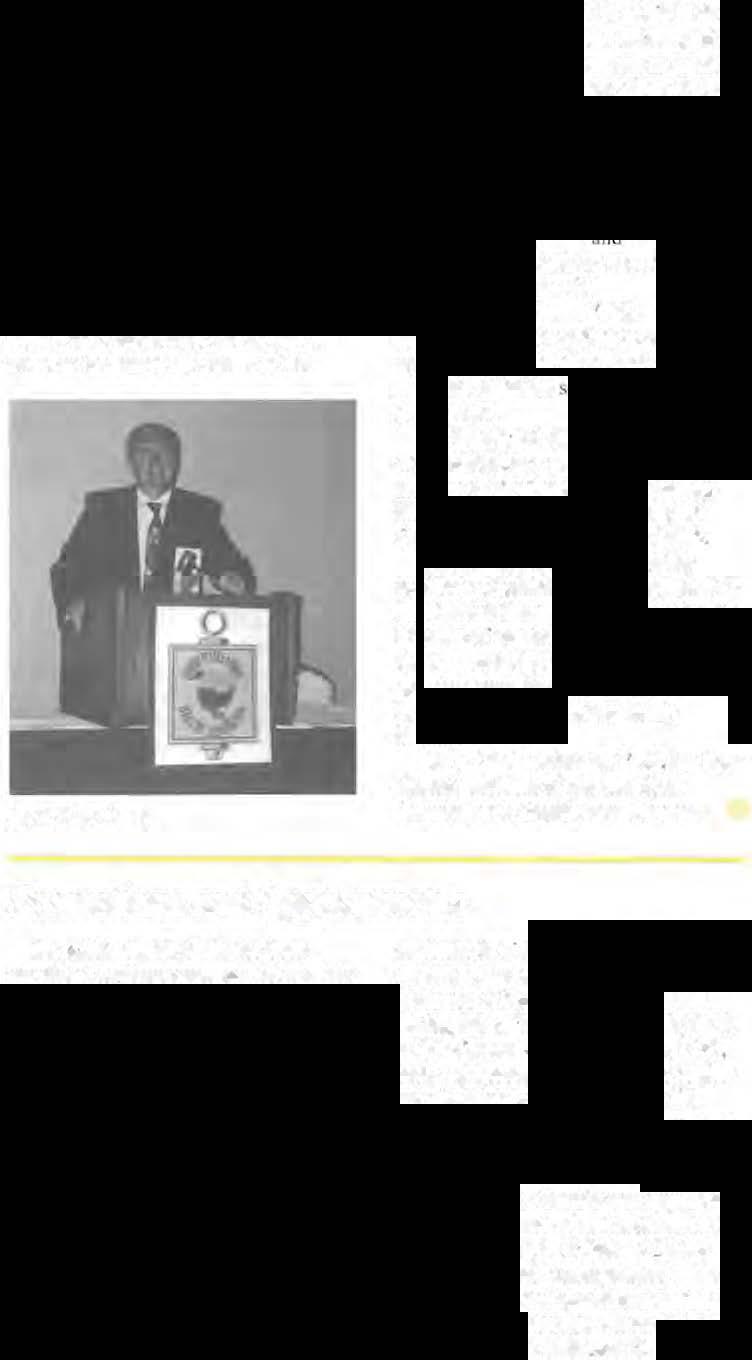
Or. Karen Overall, \''83. director of the behavior clinic at IIUP. recently became certified by the Animal Behavior Society as an Appli ed Animal Behaviorist. She is also a Delta Society Certified Evaluator of Pet Therapy. Dr. Overall presented a course at theAVMA meeting and she lectured at the World Veterinary Congress in Tokyo, Japan, on canine behavioral medicine.
Amanda fine, V'97, gave a presenta-
On Line

The School has a home page on the information h ighway. You can find us at the following address: http://www.vet.upenn.cdu/
Parts of ihe page are still under construction, but every week more information is put on line. We list events and other items. Look us up!
tion at the New Jersey Society for Parasitology meeting in february.
Dr. Steven Melman, V'73. received the Dog Writers' As�ociation of America Maxwell Award for Bc:-.t Book in the Science and llealth category for his book Skin Diseases ofDogs and Cats: A Guide for Pet Owners and Professionals. The book received a Certificate of Excellence from the Cat Writ('rs Association.
Or. Helen !\eland, associate professor of patholog_:,. was installed as president of t he American College of Pathology.
Or. Hlltun .J. KJein. v·so. director of laboratory animul resources, Merck Re�earch Laboratories, wus invited to serve on the board of trustees of the
Scientist Center for Animal Welfare and as a board member of the org<�nization.
Dr. Peter Ihrke, V'72, rccctved the CYCLF® "Fr DO" Award itt tccognit ion for ··,.ignificant advancements in small animal meuicine or �llrgcry.'' Dr. lhrk" is chief of service in ocrmatology at the veterin:uy mcc.Jical teachi ng hospital, Loniversity of Californiil, Davis.
Or. Edwin J, Andrews, V'67. former dean of the School, wa" appointed senior vice president, science .m technology, at Mallinckrodt Veteri nary, Jnc., headquartered in M undelein. 11'- .
Dr. Paol W. Pratt. \ •73. has been appointed CX(.'Cutive editor in veterinary medicine by lv1oby-Year Book, Inc., a publisher of health ... i nces b01'ks and periodicals.
Dr. Rosel� n J, Eisenberg, pr0fessor of microbiology. was appornted as a rncmher of the Fxpcrimcntal Virology Stud� �cction, Divi...ion of Rc�carch ( irants, Nation,d ln!>titutes of Health
Or. Jnhn Wolfe, \''82. a...:.ociale professor of pathology, w appoi nted to the Medical Biocht:mi..,try Study Section. Division ol Research Gr:lnl!>. Dr. Philli11 Sl'ott. associate professor of para�itol0gy, was appointed to the Tropical Medicine and Parasit<,logy Study Section.
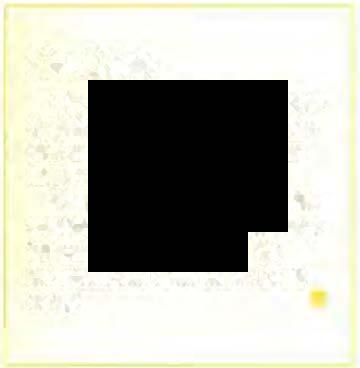
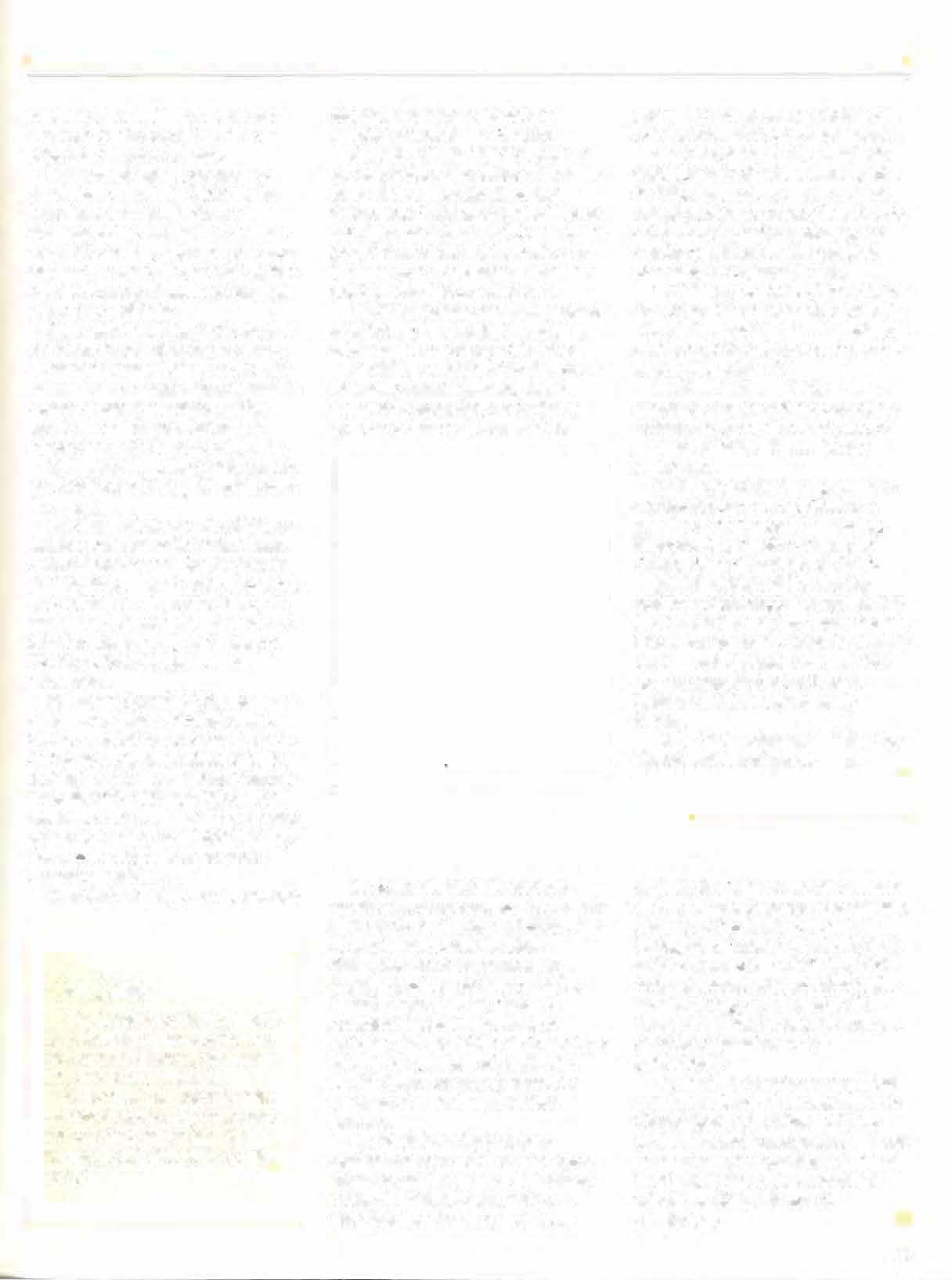
Dr. J. Clyde Jnhn-.cm, \ '62 has been elected president of the American Association of Equine Practitioners. •
Promotions andAppointnzents
Ot·. �tlchacla Kl·istula has been appointed assistant profc!>!.or of medicine and chiefof the Section of Pield Service at New Dolton Center. Or. Dean Richardson ha.., been promoted to associate professor of surgery and Dr. James Fergu.-.oo, V'81. ha� been promoted to associate professor of nutrition. J)r. AJun KJide, \"65, has been pmmoted lo professor of anesthesia and Dr. Urs Giger has been promoted to professor of medicine and medical genetit:>.
Dr. Virginia B. Reef has been appointed cbie£ of the Section of Sports 'vtedicine and Imagining at New Dolton Center. Or. Susan Crane, \"82, has been appointed assistant professor of
medicine in f.tcld Service. D•·· l\tldlllcl ..-\tchison has been promoted to associate professor of hiochcmi�try in AnimJI Biology. Dr. t\lattie J. ftendricl., \''78. and Or. f'tlCima' .1. \'lin \\ ink.le, \''7:0 each were promoted t<' a�!>ociatc professor of pathology in pathobiolg_v. Dr. Phillip Scott was promoted to associate professor of parasitology in pathobiology.
Dr. Erich j. Pitrente was appoi nted assistant profe:)sur of 'POri!) medicine in Clinical Studies. Nev. Bolton \enter. I>r. Paul Pitdter wa!-1 appointcll assistant professor of swine production medicine. Da·. Thnma� Nolan wa� promoted to adjunct associate rrofcc;.o;or of parasitology.
Dr. H. Wesley TowersTri-Color Cats
Color in cats is a c0mplicated subject. A calico is a white cat w(th patches of red and black. A tortoiseshell is black with patches of red and sometimes with white. Genetically, calicos are tortoiseshell with white. Nearly 99% ofthese cats are female. The gene producing this color is sex-linked. The m..tles are generally sterile because ofthe genettc abnormality.
Calicos are popular, possibly because of a widespread superstition thm tbcy bring good luck. (n 1nglish folklore, they are referred to as 'Money Cats." The good luck cat of Japan, the maneki neko, is a calico. If a statue of this cat faces the front door, Japanese tradition .says it will bring good fortune and money.
The standards of different cat breeds have descriptions of the many colors. Tabby is a color and the classic pattern include bracelets on the legs, necklaces and frown marl..:. on the forehead forming the letter "M.''
Color and marking!'!are inherited features and can be an intriguing field to study.
Pancreatitis
Pancreatitis is inflammation of the pancreas - an organ which secretes digestive enzymes and insulin. The cause usually is unknuw11 but <.:u11tributiog factors may include a high-fat diet, infection and some drugs.
The clinical signs are n<.Jnspecific and common to many other gastr<,intestinal disorders. Depression, vomiting, diarrhea and ahdominal pain may occur.
Leukocytosis (increased white blood cell count) is a frequent laboratory finding. There is no ideal test and diagnosis usually te-ntative. Middle to old-aged dogs are most often affected.

Treatment includes temporarily
withholding food to place the pancreas at phyl>iologic rest. r·luid therapy is used to replace lost t1u[ds and maintain the animal. Mild cases improve in one or two days; serious cases may require several days of hospitalization. Oral feeding may start after there has been no vomiting. The diet should be h)gh in carbohydrates (rice, pasta, potatoes) and low in fat Antibiotics may be indicated.
In some dog!>. pancreatic insufficiency may develop. These dogs may Jose weight in spite ofexcessive food consumption. Suppleme11ting the diet with pancreatic enzymes usually helps these cases. Lifelong treatment is necessary.
Your veterinarian should be consulted about the treatment and management of gastrointestinal problems. Many different conditions have the same clinical signs but the treatments may differ. An important rule is that fluid replacement is indicated when there is severe diarrhea and vomiting. Don't delay seeking professional help.
Pare-Bred vs. MixedBreetl
Many factors are involved in selecting a dogas a companion. Whether or not a purebred is selected is not as important as knowing what to expect from a puppy.
The big advantage of a purebred is predictabiliiy. The Characteristics of a registered breed have been established over muny generations. Size at maturity, coat characteristics and temperament will help determine if Ihe dog selected will fit your lifestyle. Ifa dog is obtained from a breeder, you shuuld have an opportunity to see adults and learn what is required for propercare,such as grooming artd exercise.
There are many good mixed-breed pets and some feel that adopting a dog from a shelter is one way to help with the
over-population problem.The blame should be placed on the irresponsible owners who do nol provide proper care and training and allow unwanted pregnancies because their animals arc not neutered. Unfortunately. many people decide they do not want a dog after all and abandon it. A dog should be a part of the family for at least 10 years. If your interest is dog shows and possible breeding, you must start with a purebred. Tht: American Kennel Club now has a Untited Registr<1tion Program for purebreds that may not meet the breed's standard in all respects. These dogs arc considered unsuitable for breeding (any off<;pring could not be registered) and are not eligible for entry at championship conformation shows.To the untrained eye, they can look like show dogs and they are wonderful pets and companions.
Jack Russell Terriers
Jack Russell Terriers. called Parson .lack Hussell Terriers in England, are a small breed, very much like a small, short-legged Fox Terrier, The breed is recognized by the Kennel Club (England) and the United K\!nncl Club (tlnited States), but not by the American Kennel Club. The dog was reduced in size to develop a hunting terrier which would go to ground and bolt rhc fox. They arc excellent family pets and readily adapt to house and npartment life.
The dogs are smooth, rough or brokencoated. All arc predominantly white with tan, brown or black markings. The docked tail, about four inches long, provides a good hand-hold. They arc active and alert with a happy. fearless disposition.Their height ranges from 10 to 15 inches und they weigh uround 15 poun<..ls.
There is a l. S. Registry for the breed,

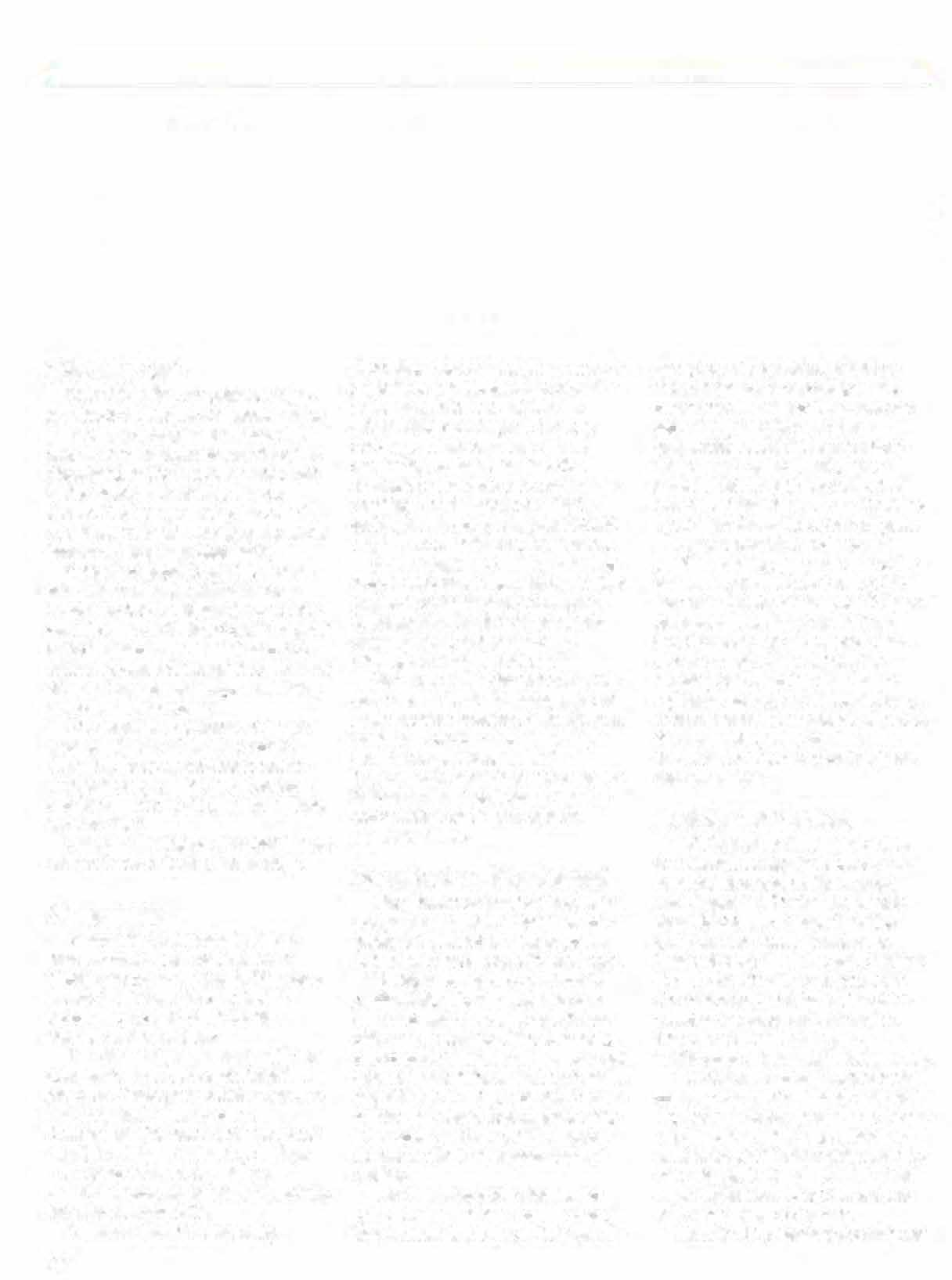
but conformation showing is not encouraged- the parent club wants to focus on working qualities.
The breed takes its name from Parson John (Jack) Russell, born in England in 1795. He was one of the founders of England's Kennel Club in 1873 and judged Fox Terriers in 1874 at the first Kennel Club show in London. He did not exhibit his own dogs. It is said that he believed the true measure ofany terrier was his degree ofgameness and it annoyed him that many owners who showed their dogs considered them too valuable to engage in the task for which they were originally bred.
Microchips
The American Kennel Club has established the AKC Companion Animal Recovery Program with a 24-hou r phone and fax line to unite lost pets with their owners. An essential part of this program 1s a central database that will record, for a fee of $1 2.50, the permanent identification of a pet. Tattoos or microchips from any manufacturer are considered permanent identification, collars and tags are not. The registry is open to any pet, cat, dog, bird, as long as it has permanent identification.
Enrollment forms may be requested from AKC Companion Animal Recovery. 5580 Centerview Drive, Suite 250, Raleigh, NC 27606-3394.
A microchip is a tiny transponder with a u nique number that is implanted by injection under the skin in the shoulder area ofthe animal. The chip is read with a scanner. Unfortunately, there is no scanner that reads all microchip brands, though scanners wiII indicate the presence ofa chip. so a different scanner can be tried. The AKC and others are working toward a universal scanner.
Microchips are implanted by veterinarians. Your veterinarian may use the AKCrccommended chip or another one. No matter which one is used, to recover a lost pet, the permanent identification must be registered. AI this point, it appears that the AKC Companion Animal Recovery Program is the only national registry for all types of permanent identification. The phone number to repon a lost or found pet is 800-252 7891 and the fax number is 91 9-233-1290.
HUP and VHUP surgeons use new technique to help dog
by VH UP and HUP surgeons to help the dog and <;pare him a pa inful, lengt hy recovery
Oliver's owner works for a medical instrument company where the KaiserPitling™ No Cannu la Thoracoscopy Instruments arc manufactured. Invented by and named after Dr. Kaiser, these mstruments permtt a surgeon to perform procedures within the clo�cd chest cavity. They are used in conjunction with a thoracoscope equipped with a light source nnd camera chip. The instruments are inserted into the chest through a relat.ively small inCISIOn.
Oliver's lungs had a slow leak. A ttny hole in one of the lobes let air escape into his chest cavity. normally a vacuum. causing a spontaneous pneumothorax, a serious medical problem. Oliver couldn't breathe properly because the air in his chest prevented his lungs from expanding fully.
The 12-year-old Siberian husky was admitted to VIIUP for treatment. Here he made veterinary surgical history by becom(ng the first clinical canine patienl treated by thoracoscopy and thoracospic surgery. His owner offered \. l-tLJP surgeons the use ofspecial instrumenLs and Dr. Larry R. Kaiser, a thoracic surgeon at HUP who developed the instruments and the procedure, agreed to come to VHUP to help Oliver.

"Nl,rmalJy we would have opened his chest sternally," explained Dr. Joan Hendricks. "This is very painfu l and the recovery Is lengthy. Wealsocould have attempted to inject some irritants. hoping that scarring on the exterior of the lung lobe would close the leak. Both arc prelly drastic steps. So a thoracoscopy looked very promising. We accepted the offer by Dr. Kaiser and 1he owner worked out the details for the joint effort
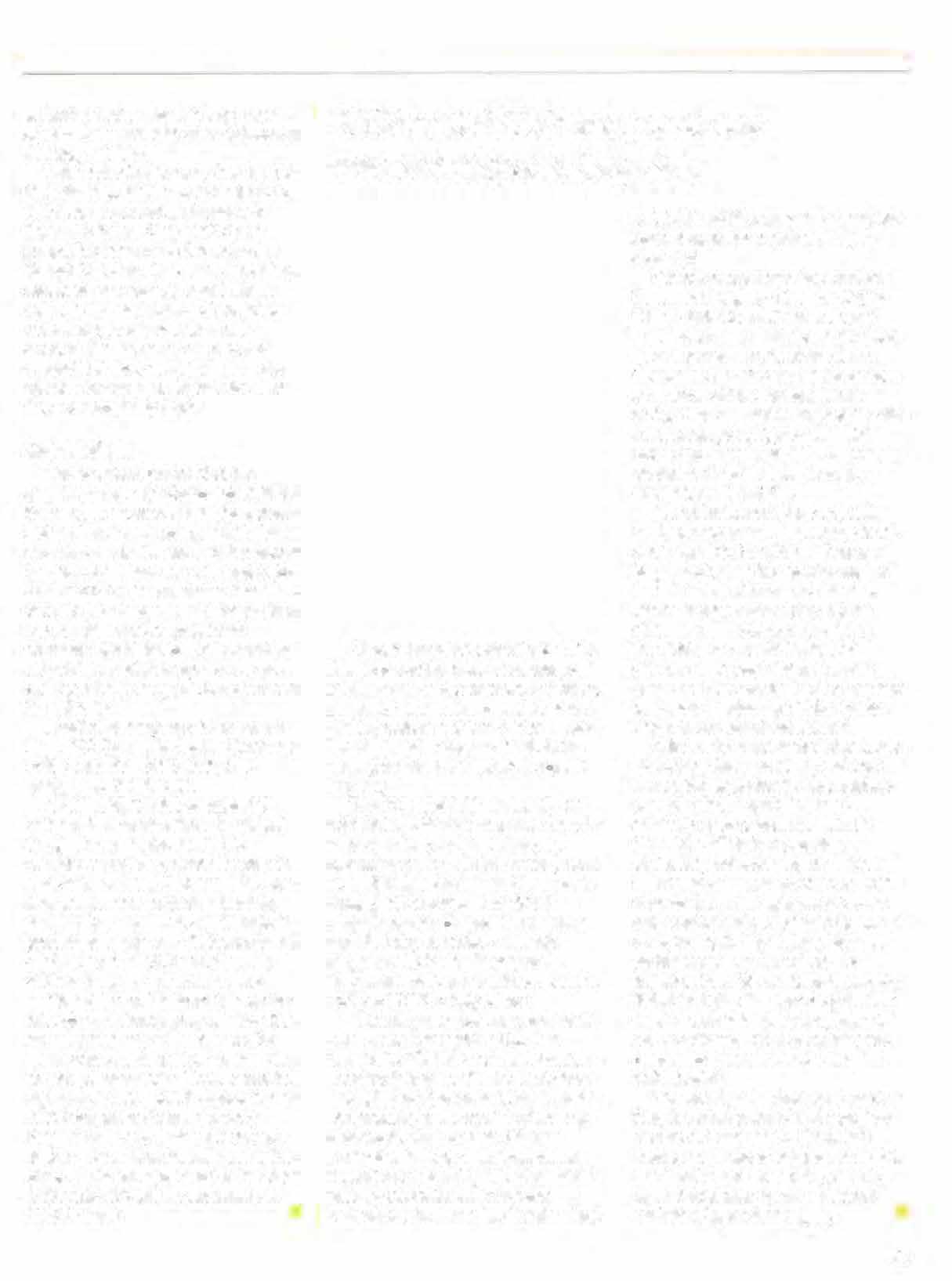
"These instruments have a special configuration to allow their usage In the chest.'' said Dr. I lendricks. �They are longer and curved in a special way and include forceps, hemostats, spatu las, knives, suction tubes, and a stapling device as well as other items. It was incredible: we saw the interior of Oliver's chest, projected onto the TV screen and then watched as the lung lobe 1vasgently manipulated by Dr. Kaiser The hole was found and closed."
Oliver was up and around shortly after he woke up from anesthesia and went home a few days later "This procedure changed a major operation into a relatively minor procedure," said Dr. Hendricks. "This is so promising, particularJy for older patients. It could replace the thoracotomy when we need to perform a chest exploratory. We are quite excited and are trying to figure out a way to acquire the thoracoscope and the instruments so we can use the technique here. We are lucky in that Dr. Kaiser and his colleagues are just down the street, so training our surgeons will not be a big problem as there is a great cooperation between the two hospitals and schools."
The technique has been used successfully in human patients in Europe for a nu mber of years and Dr. Kaiser is a leading proponent ofthe procedure. II is less invasive and the recovery time is much shorter lhan for the traditional methods of open chest surgery.
Veterinary TeachingAwards
The Veterinal) �tedical Student Government Teach1ng Awards were presented at a dinner dance on April I. 1995 at the University Museum. Each year students honor special teachers. not only clinical and chLssroom instructors but also interns. re�idents and technicians.


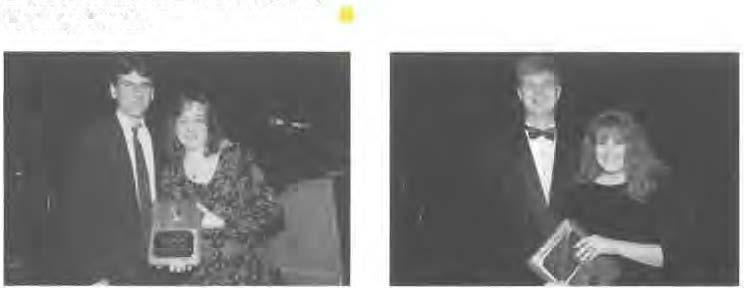
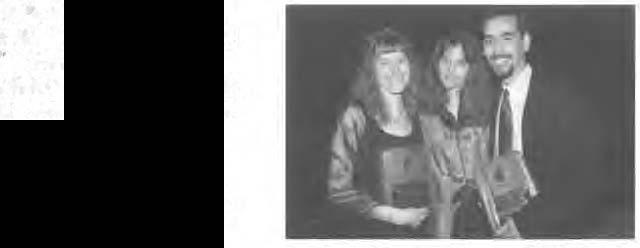
The Classes of 1995 and l997 selected Dr. Robert Washabau, assistant professor of medicine. a.s their award recipient. Dr. Washabau also received the Norden Di:.tinguished TeacherAward.

Dr. David Holt a"sis t ant professor of surgery, was honored by the Class of 1996, anti the Class of 1998 presented its award to Dr. Peter Dodson. professor of anatomy.
The Class of 1995 honored two technicians, Donntt Si�oak. anesthesia at VHUP. and Eileen Rule. nursing at NBC. Their Intern Award went to Dr. Tina Wahlstrom, and Dr. Steve Giguere received the Resident's Award.
Or. Giguere \\aS also the recipient of The Wi[Jiam Boucher Award for Outstanding '1caching at New Bolton Center by a House Officer. The Jules and Lucy Silver Animal Bedside Manner Award was presented to Dr. Rachel Esrig, an intern.
Dr. Charles Pugh. assistant professor of radiology. received the Residents' Award for Outstandwg Teaching by a Facu lty Member. The Interns' Mentor Award was presented to Or. Dorothy Brown, resident in �urgery.
Justin Soli, Krista Price and Robert Neff, all members of the Class of 1995, received the Senior Student Patient Care Award. presented by the nursing staff. Harcum nursing students honored technicians Martha Stevens at VHUP and Colleen Klein at NBC with their Nurse TeachingAwards.
Dr. Robert Washabau receives Class Teaching AwardsfromSteve Suter, V'95, andScou Weber, V'97.PetMemorialDonorsforFiscal Year 1995

Jnstituted in 1982, the Pet Memorial Program provides a thoughtful vehicle for practitioners to express their sympathy for the loss ofa client's pet. The program helps strengthen the bond between veterinarians and their clients, while generating important unrestricted dollars for the SchooL
One family expressed their thanks and said, .. lt's nice to know that we are not the only ones who miss him." Another owner wrote, "Your kindness will alway� be in my hear!. everything you have done for Tipster and me."And. <lS this couple confided, "we have always wanted to tell you how hard it was to put Blackic to sleep. But you made a very painful situation much easierby your caring and sensitivity."
We thank the 86 veterinarians and hospitals listed below who participated in the program in 1994-1995. The contributions, totaling close to S23,885, enhance teaching and patient care programs at theVeterinary Hospital of the University of Pennsylvania and the Geurge D. Widener Hospital for Large Animals. lf you are interested in participating in the Pet Memorial Program, please contact the Development Office at (2 1 5) 898-4234.
Frederic K. Baff, V.M.D.
Michelle C. Bartus, V.M.D.
Albert M. Beck, D.V.M.
Michele B. Belisle, V.M.D.
Robert L. Bergman, Y.M.D.
Frank A. Borzio, Jr V.M.D.
Alvin J. Brown, Y.M.D.
Charles E Brown, Y.M.D.
John P. Rurlein, V.M.D.
John S. Aush, V.M.D.
Doris A. Cappiello, Y.M.D.
Thomas Carreras, D.V.M.
Kevin P. Coogan, V.M.D.
William Corbett, V.M.D.
Henry L. Cruft, Jr., Y.M.D.
Deborah Cronin. Y.M.D.
Robert P. Cusanno. V.M.D.
Paul W. Donovan, Y.M.D.
Beth Y. Dronson, V.M.D.
Robert C. D'Urso, V.M.D.
Diane R. Eigner, Y.M.D.
William G FarrP.ll. V.M D
Jeffrey Feinman, Y.\-1.[).
Paul Fenster, \1 'VI D.
Fred Fernich. V.M.D.
Juan L. Ferrer J'erez. V.M D.
C'J.ryn Finnegan. Y.M.Il.
Susan Fisher. Y.M D.
Sherwood Cloth, v.r-.1.0.

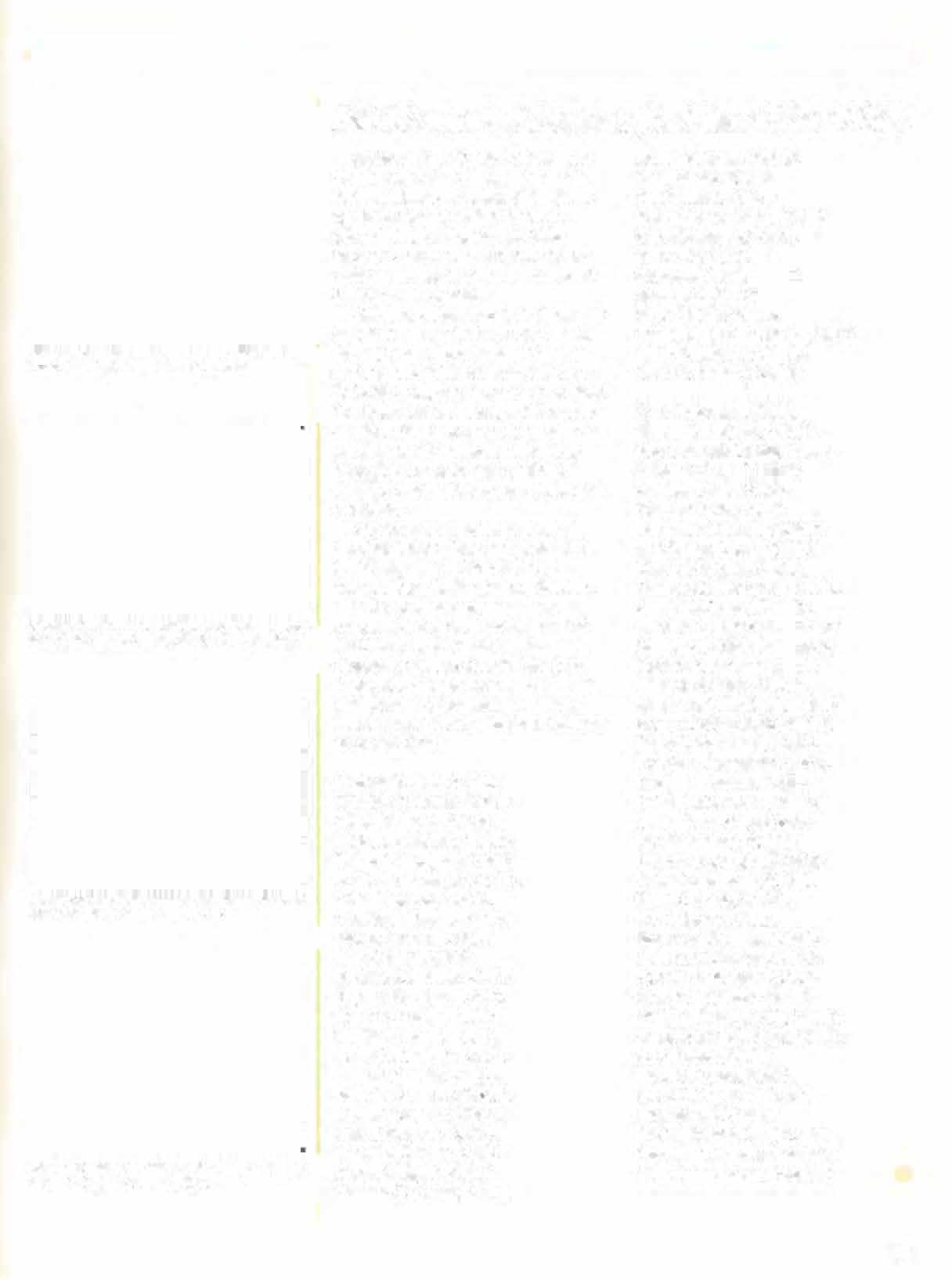
Mark B. Guise, V M 0
M H. Gulick. V.M.D.
George l H;,11tcnstein JV, Y.M.D.
Betsy K. Kennon. V.M.D.
James A. Kepner. V.M.D.
Denise Kessler. ..
Cynthia Kosac7,V.M.D.
Sharon P. Lachctte. ·M.D.
Kay Stelmach I .arkin, V.M.D
Theodore J. L cif, \1 M U.
.Jennifer Lewis, V.M.D.
George Lewis, V.M IJ.
Lawrence J. Linnetz, VM.D.
Ann Wayne L11c;•"- YJvLD.
Robert F. Martin, V.M.O.
Carolyn M. McDaniel, V.M.D.
Jumes Mcl·arland, Y.M D.
Elizabeth lt McKinstry. \'.M.D.
Jonuthan E. f\1eincke, Y.M.D.
Pat ricia A. Morgan, V \II.D.
Michael K. Moss. V.M.D.
Joseph A. Nebzydoski. V.M.D.
Kerry Jo Nebzyt.loski, V.M.D.
Barry S. Newuman. V.M.Il.
Fredric D. Nisenholz. V M.D.
Michael P. Ratner. V.M.D.
Arthur Richards. Jr. V.M.D.
Barbara Rogobky, V.�.D.
Dan Rosenberg, V M.D.
Charles F. Ruggiero. V.M.D.
James R. Rummel. YM D.
Farid C. Sal eh. V.M.U.
Ira H. Silver, V.M U.
Raymond W. Stod•. V.M.D.
Lisa Suslak-Brown, V.M.O.
Cynthia J. Swi ngle, V \II D
B1ett A. Sylvestc1, V.M.D.
William B. rarpley IlL Y.M.O.
Gregory M. Thihodcau. \'.M.D.
R C. Troyc�. \'.M.D.
Mark D. Tysun, V.M.D.
Boyd C Wagner. B.V.M.S
Joan Yarnall, Y.M.D.
Burnt Mill Veterinary Ct:nter
Northern TierAnimal lluspital
Wilmington Animal llol>pital
D1: Pe1erDodso11 recetves IheClossof1008 Teaching Awardfrom Jeff81!rman, classpreside111. Dr. David Holt receives the Class of/996 Teaching Awardfrom Koretr Froberg·Sieplt, class president. Wendy Curtts-Uhlr! prese11ts t/te Nurse Teaching Award roMarlin Stc,·cns \IHUP (r.). Morr Lou Rosouu prcscnrs rite Nurse T!!oclting !\ward to Coflccn Klein-NBC (I.).Anima/Assisted Therapy and Education Certificate Program
l larcum College. The Do.:vereux Foundation and the Univcr�ily ot Pennsylvania School of VeterLnary Medicine
I-IRS r SL�liNAR - -People lo Place.. I low contacts with companion animals and nature maintain human health and emotional balance. The 12 Lhree hour sessions start September I 9, 1995.

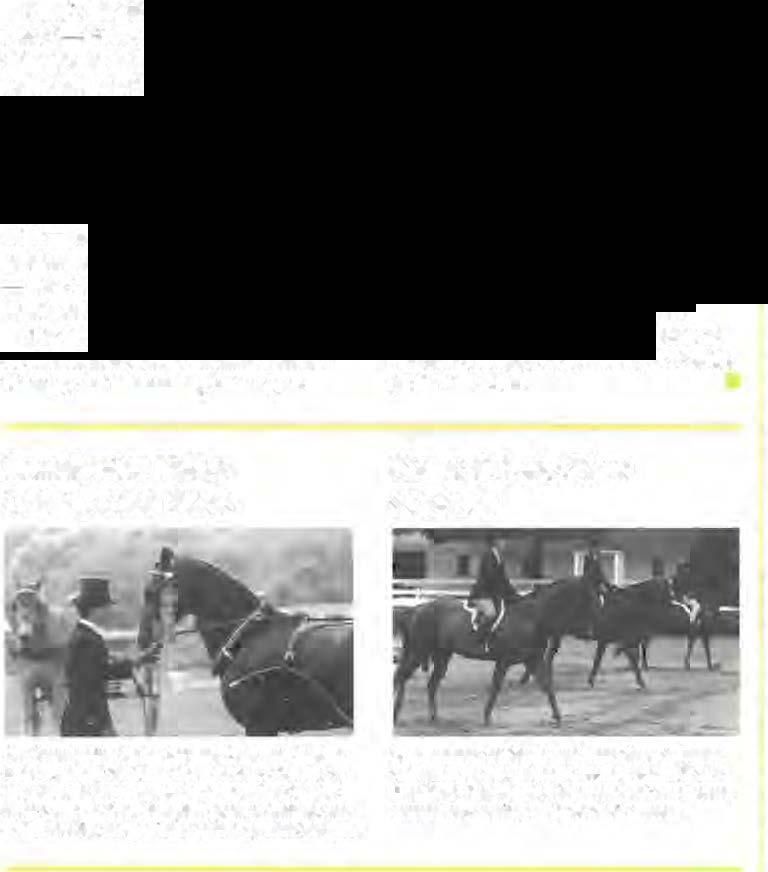

This scmin:lr will review the recent scientific evidence which confirms the ancient wisdom that our living environment - our pets, gardens, parks, rural landscapes, wild and domestic animals have i mportant positive effects on health and well-being
Theseminar is the first part of a certificate program in Animal Assisted Therapy and Education. but may be
Brandywille Valley Driving Club Show
taken independently. It will be taught by Dr. Aaron Katcher and guest lecturers. A second seminar '·Nurturing Healing: Shapi ng Therapeutic Encounters between People, Animals and Nature" will be taught in the 1996 spring semester. The certiflcate program is designed to meet the Delta Society's standards foraccreditation and wil l include, in addition tn the two term seminars, the Delta Society's Pet Partners home study course and seminar 0n temperament testing as well as supervised clinical experience. It is intended for health care professionnls but open to others with permission Fora complete description or the certificate program and registration materials, please contact Continuing Cducation at Harcum College. Bryo Mawr, PA 19010. (6 10) 526-6100.
Horse & Pony Show at Devon
Scholarships
The Iris M. McGee Scholarship was awarded to Kelly Georgeau, V'96. Christine Lundy, V'96, received the Israel and Anna Live Scholarship. The General Federation of Women·s Clubs of Massachusetts has awarded Pandora Davis, V'99, a Memorial Education Fellowship. The Richard A. .Dorr, Jr. Memorial Scholar� ship went to Catherine Racek, V'96. The Lancaster Kennel Club, Inc. gave Susan Gula, V'96 a scb.olarship. Pfizer, Inc. awarded a scholarship to Guy Hammond, V196.
The following students were recogn.ized by TheAmerican Kennel Club with a scholarship: Emily Elliot, V'97, Emest Weber Ill, V'97, Stacey Conarello, V'97, Camline Garzotto, V'96, and Christine Harshbarger, V'97. The Amlan Foundation Sdtolarship was given to Debra Kriftcher, V'96. The Lloyd's Underwriters, Lloyd's Brokers and Ken.tucky Agents Joint Equine Research and Education Program Commitlee have granted an award to David T. Runk, V196,
Three students, Michael Yamall, V'96, Andrea Straka, V'97, and Kelly Georgeou (McCrabb), V'96, receivetl the Berks County Kennel Club Scholarship, and the Burlington County Kennel Club Scholarship went tu Karen Bullock, V'96. The Alonzo Edmiston, Jr. Book Fund was presented to Valerie Heartsfield, V'96. Mary Jane Potter, V'97 and Julianne Grady, V'96 received William Goldman Foundation Scholarships
Donation to Microscope Program
The University of Pennsylvania Women's Club has made a donation to provide new microscopes for students in financial need.
This is the fifth award to the Boucher micro!)Cope program given in honor of the late DrWilliam Boucher and Mrs. William Boucher.
The following wereawarded a scholarship byThe New Jersey Veterinary Education Foundation: Donald Force, V'96, Karen Bullock, V'96, Catherine Racek, V'96, while the Pennsylvania Veterinary Foundation. awarded a scholarship to Guy Hammoud, V'96 and john Ruffing, V'96. Four !;enior students received tbe Dr. .1. E. Salsbury Scholarship: Ruth Shedwick, V'96. Daryl Drnevich, V'96, Bridgette Jablonsky, V'96, and Guy Hammond, V'96. The Union County Kennel Club Scholarship went to Brian Karolewski, V'97 and the Westminster Kennel. Foundation awarded B1·enda KJauoberg, V'96 with a scholarship. The Clifford F. Wright, Jr. Scholarship was given to David Bentzel, V'96. The Un iversity of Pennsylvania Women's Club Scholarship for the pLrrchase of microscopes was donated to Kerri
The !Jra,dyw111r: Valley Driving Club, Inc, held 011 Open P/ca�ure Diriving Slro•v inJune. Portions of the proceeds h>cre donated 10 N/llv Bolwn Center. Siro"·'t here is MnrkSc/rofield, goom, ·l10lding one of the win111118 compelliOr!i. (plro/o by Lisa Barbone•) Last summer the Horse andPony Show at Devon, utganized by Mrs. Dolores Swann, was held a> n benefitfor !he School. S1to1v11 ht:rrc are soma young competiton 81!illllg readyfor thetr classes.Davis, V'98, Claire Morissette, V'98, Renee Simpler, V'99, Jenny Vodenichar, V'99. and Franciszek Von Esse. V'99.
The School's Scholarship committee setected Marnie Fitzmaurice, V'96 to receive a Dean's Scholarship. The Mrs. Jack L. Billhardt Dean's Scholarship was awarded to Paul Wagner, V'96. The Dr. W, Edward McGough Dean's Scholarship was presented to Amy liinc, V'97. Laurie Spooza, V'96, Brian Karolewsk.i, V'97, and Elizabeth Bunting, V'97 earned the Samuel T. and Emily Rawnsley D�an's Scholarship. The J. Maxwell Moran, Sr. Dean's Scholarship went to Daryl Drnevich, V'96, Joseph Ewaskiewicz, V'96, and Bethany Gr:ohs, V'98.
The Lois F. Fairchild Scholarship in Veterinary Public Service was presented to Ernest Weber Ill, V'97. Mark Kapolka, V'98 was given The Henry S, McNeil. Jr. Dean's Scholarship. Hill's Pel Products gave a Hill's Pet Products Dean's Scholarship to kuth Shedwick, V'96, Daoielle Bistrichao, V'97. and Kerri Davis, V'98 The Anne Linn White Dean's Scholarship was also given to three students: Renee Carpentier, V'97, Sasha Hilchuck, V'96, and Bridgette Jablonsky, V'96. The Bruce J. lleim Dean's Scholarship went to Christopher Allen, V'97 and Mary Jane Potter, V'97.
Three students earned the Dr. M. Josephine Deubler Dean's Scholarshipr Brenda J.<]au(lberg, V'96, Karen Moulin, V'98, and Esteban Pokorny, V'98. The Charles S. and Phyllis F. Wolf Dean's Scholarship was given to Russell Howe-Smith, V'97 and Morgan Cavanaugh, V'98. The Ethel H. Mitchell Dean's Scholarship was won by Kimberly Ashford, V'97. Reina Fuji, V'96 received the Ethel 0. and Allen H. Carruth Dean's Scholarship while the Edwin J. Andrews Dean's Scholarship was awarded to Christine Harshbarger·, V'97. Christopher Allen, V'97 received the Harry B. Roshon Dean's Scholarship.
The Erna, Herbert and Eberhardt LeShin Founders Scholarship was awarded to Oanielle Bistrichao, V'97. Dexter Archer, V' 91 earned the Dr. John Baxter Taylor Dean's Scholarship. The newly created Dr. Ginnie Lieblein Memorial Scholarship was presented to Barbara Tallant, V'96.
Dr. Ginnie Lieblein Memorial Scholarship Endowment Fund Created
The University of Pennsylvania School of Veterinary Medicine recently received a Memorial Scholarship Endowment Pund in the name of Dr. Ginnie Lleblein, V'78 from her husband, Mr. Walter C. Wells. This fund is to be awarded to one or two students in the senior year ofVeterinary Medicine. The following veterinarians, hospitals, associations, and other individuals havealso made a contribution to the Doctor Ginnie Lieblein Memonal Scholarship Endowment Pund: Audubon Veterinary Association
Isabel T. Bedrosian
Dr. Jill Beech
Berkshire Veterinary I fospital
Nancy M. Bromberg, V.M.D.
Brooklyn Veterinary Hospital
Patricia A. Brown, V.M.D. and Randall E. Brown
Ournt Mill Veterinary Center
L. Clarke Cushing, V.M.D., PA
Dr. Richard 0. Davies and Jnge E. Davies
Michael A. Eckhaus, V.M D.
Robert W. Fox, V.M.D.
John H. Heidgerd, V.M.D. and Jean P. Heidgerd
Mattie J. Hendrick, V .\lt.D.
Sarah Drabing I ticks, V M.D.
Donald E. Hoenig, V.M.D. and Lynn K. Koenig
Dr. Lin Klein
Mark C. Klingensrn�th, V.M.D.
Ms. Catherine C Larmore
Katherine IJ. Maxwell
Joan E. Miller
Jane Morello, V.M.D.
Susan D. Morgan, V.M.U.
The Pall Veterinary llospital
Mrs. Virginia C. Peters
Charles W. Raker. V.M 0.
Charles F. Reitl, D.V.M.
Sara F. Rice, V.M.D.
Francis Lynn Sanderson. V.M.D. and Paula D. Sanderson
.James E. Simpson, Jr., V.M.D.
Richard Smitherman, V.M.D. and Mrs. Angela E. Smitherman
Thomas G. Walrond1 V M.D.
Ricarda Kelly-Walrond, V.M.O.
West Mountain Animal Hospital, Inc, Michael Woltz, V M.D.
Karen M_ Young, V.M.lJ.• Ph.D. and Albee Messing, V.M.O., Ph.D.


Planned Giving Programsfor the School oJVeter11ary Medicine
Over the years, the School of Veterinary Medicine has received generous support from donors who have made planned gifts through the Planned Giving Programs of the University of Pennsylvania.
Planned gitls are tlexible. tax-advantaged arrangements that enable donors to make substantial gifts in ways that complement their personal financial planning. They can be designed to generate life-long income, obtain significant income tax deductions and reduce or eliminate estate taxes. Planned gifts can also be a means of converting lowyielding assets into a higher income stream a.t a reduced capital gains cost.
The Office of Planned Giving Programs of the University of Pennsylvania offers a variety of life income arrangements including: Charitable Gift Annuities, Deferred Gift Annuities, Pooled Income Funds, Charitable Remainder Trusts and Charitable Lead Trusts. The Office of Planned Giving Programs can aJso help donors tailor bequests and structure gifts of life insurance and other assets for the benefit of the School of Veterinary Medicine.
Participation in any of Penn's Planned Giving Programs also bestows the benefits of membership in The Charles Custis Harrison Society. Those benefits include rtnnuaJ luncheons, seminars and the University's planned giving newsletter, Partners i11 Penn 's Future.
The Office of Planned Giving Programs is always willing to meet with donors and their financial advisors to design the most sdvantagcous \Vays of giving to (he School of Veterinary Medicine. For more information, please contact John Foster, Deborah Layton orTom Hofstetter of the Office of Planned Giving Programs at: 1-800-223-8236.
Special Gifts
The fnlltl\' Ins: mndc a dun�o�tinn Ill lh� frtcnd" of lhl! Small Aninml Ho-;pitul of the l nhc�ll) ot' Jlcnn,}IYJniu in h•mur or mrmor) of tbclr dr\lttcd p'·l\:
A gift by M'- �u�.tn Clark
r\ gtt't by "t<; ltn.t (;oil
A gift b\ Ms. Lee Ann., Rurlc<lg�
A g ift by M:-o Lvel) 11 Yost
A giit in mcrlH)ty of ·\MBI·f< by Mrs. Mary Robt:ns Robtnson
A gift in mcm<•ry of ( ORCY b) M r and M;,,. nen11i:o, r leming
A gift in mcmJfY <..•f PRN II by Mr and Mr.;. Alfred lnghn

A gil't in memory of 1101\l Y BEI\R by 1\tb. Je<\nne I lope
A gift in r!lCn\ory of Ill (;(oiF. by Ms. Juan Kaul111an
A gitt in memory of I lUG(.,IE by Mr. and Mn.. St;wl�.:) t�ichmond
r\ gift in mcnwr) ur JI\SOI\ by Hilary Ingalls nm.l Ken (.alter
!\ gift i n memory vf MAX hy Ruzz and Ch<lrlouc Stcph •ny
A gift in memory of· P.J. '' hy vir. and �lts. (1:1ry E. C'hcvakier
The folll1wlng ;tl ,:!1f, In the Fri<-nd� of New Button CLnl<•r In memc•ry or honnr ofa -.peclal animal:
A gift in honor of ANNIE by Mrs. Nancy Oorman
A gift in memory of OARON and IIARBOUR TO\\"N by Lockwood Avenue \r11m.tl Clime
A gift in honor of BLACK JAC'K the goat by Ms. Donna M. Oppen
A gift in memory of Bl.UF BAYOU by �usie Almon-Matangos and Dill
Marangos
A �ifl in memory •>f Jt..MPl�R to the l'amworrh Funu from Woodville. in care of M<.. Janl'l l.!lliot
A gift in nwmory of I OKKI by Ms. Llizal>cth W Olnscod.
A gift in memory of TOO tiOT FOR YCll' a.k.a. CA[ I by Mr. and Mrs. Robert Walker
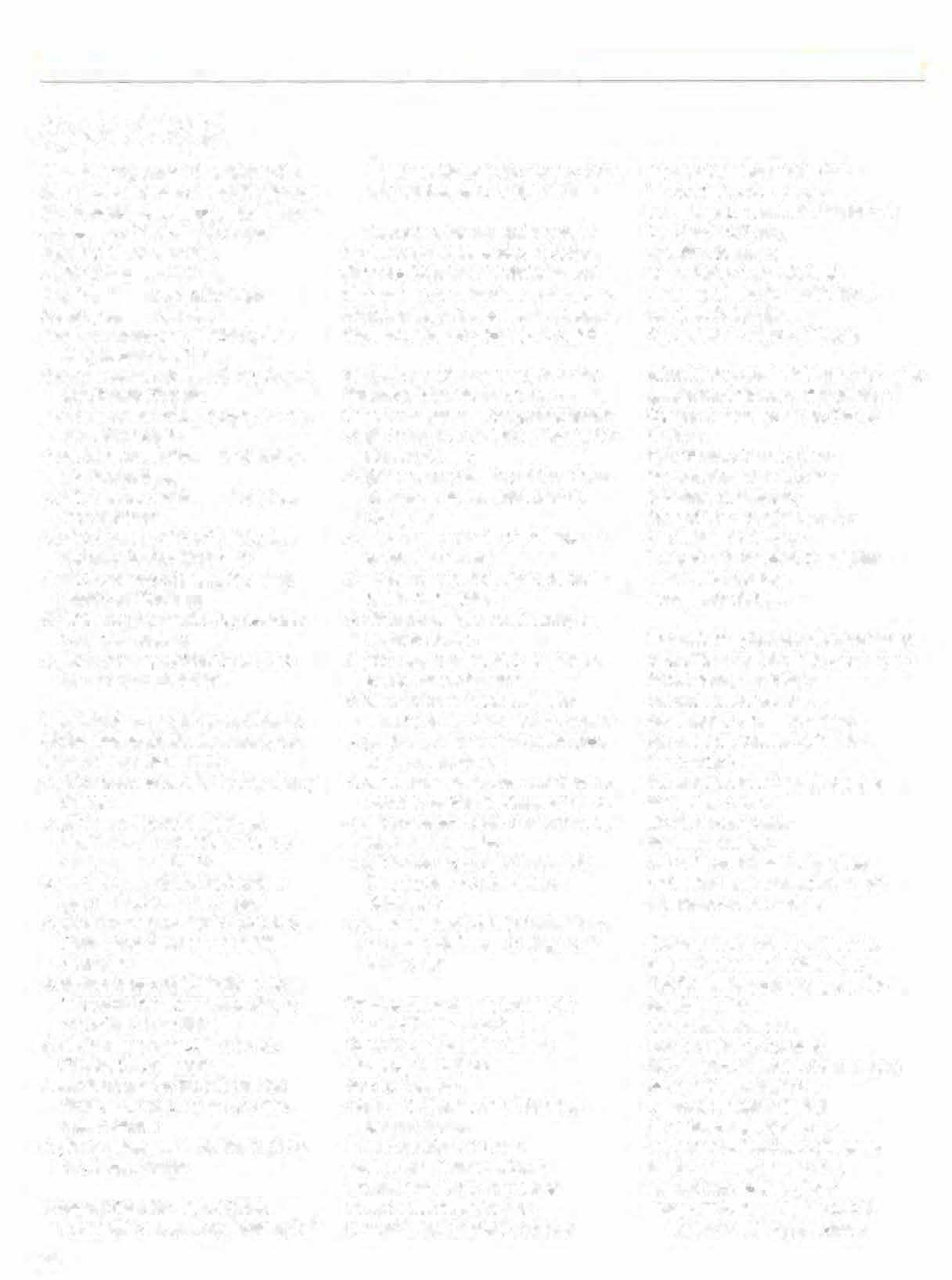
A gift in memory of WOOOS l'OCK by M� Barbara Bauer
A beque.<;! from the estate ol Esther Lovett Vail was made to the School of
Veterinary Medicine in memory of her husband Edward L. Vai l. V'36
Zeneca Inc. has awarded a grant of '!i5,000 to The Wildlife Service ar the School ofVeterinary Medicine to fund the purchase of an incubator, microwave oven, hearing pads, and lamps ro i mprove the survival rnre of critically ill wildlife
Tbe t'ollnwing huve made gifts to the Friend' of �l!w Bolton Center in hunur or mt-rnm·y ot'the person listed:
A gift in honor of Dr. Mark Allam by Mr. Matthew G. Fox
A gift in memory of Mr. and Mrs. Dean Bedford by Mr. and Mrs. Jol\o H. livingston
A gift in memory of Phyllis Christmann by M:;. Bonnie Toth
A gift in memory of Philip B. Hofmann by Ms. Judy Richter
A gift in honor of Lauren P. Kelley by Mr. Scotl Kelley
A gift in honor of Dr. M. Lynn Meyers by Ms. Ma\gie Pierman
A gift in memory of Mr. H. Willier M urphy by Ms. l.<ar herlne M. Watson
A gift in honor of Dr. Dean Richardson by Ms. Susan Rotncr
A gift in honor of Drs. Ray and Corinne Sweeney by Neal C. Ralston, V.M.D.
A gift in memory of Mr. ChuckTimo by Ms. Marlene Prosky
A gift in memory of Mr. Thaddeus R. Trout by Mr. and Mrs. John .1. Burkholder
A gift in honor of Dr EricTullencrs by Mr. anti Mrs. Samuel H. Rogers of White Oaks
The donors to the Dr. William B. Boucher Fund are as follows:
Ralph W. and Anna Lee Barrow
Ms. Margaret F. Beck
Sara E. Childers
Choir of the Presbyterian Church of Kennett Square
Robert and Margery Davis
Mr. and Mrs. Robert M. Dunn
Mr. and Mrs. Hamilton D. Eaton
Dr. and Mrs. Frank Ferrigno
Howard E. and Elizabet h A. Ffsher
Mr. and Mrs. Wallace M. H unt
Ms. Catherine C. Larmore
Ms. Eileen Love and Ms. Sue Barrel!
Dr. Liam P. O' Leary
Mr. Wi 1Is Passmore
Mr. and Mrs. Arthur C. Ritter
Dr. Harry K. and Norine G. Royer
Ms. Sara G. Sperli ng
Mr. and Mrs Wallace G. Taylor
Listed below are individuals who made gifts to the Friends of New Bolton Center in menu:>ry of Mr. Otis R..
Dodson:
Best Western Country Oven
Mr. and Mrs. Joh n A. Bogar
Ms. Betty A. Hardesty
Mr. and Mrs. John W. Knauber
Mr. Willard G. Morrow
Pennsylvania National Horse Show
John W. Purcell, Esq. Runnymede Stables
The following individuals contributed to the Tamworth Fund in memory of Mrs. Edith Joan Elser:
Mr. and Mrs. Jack 13ass, Jr
Ms. Susan T. Ch�1thficld-TayJor
Mr. and Mrs. Charles D. Cowles
Mr. George Haas
Mr. and Mrs. E. Edward Houghton
Mr. Edgar R. Owen
Dr. Monica Reynolds
Me Edgar Scott, Jr.
Mr. and Mrs. Richard'Thompson Unionville Equine Association, P.C.
Ms. Katherine M. Watson
Contributors to the Lawrence E. Ensor, Jr. Memorial Fund are:
The British Bloodstock Agency, Pic.
Mr. Elliott Burch
Caper Hill rarm, Inc.
Ms. Christine C. Connelly
Mr. and Mrs. Richard P. Cunningham
Mr. and Mrs. John T. Dee
Suzanne and Metin Enderi
N. B. Fairclough & Son, Inc.
Mr. Md Mrs. Bertram R. l'irestone
Foxfield Thoroughbreds, Inc.
Mr. and Mrs. John A. Gayer
Grigg�, O'Neal and Kidder P.S.C.Equine Veterinary Associates
PennAnnual Conference
Many thanks to the 650 veterinarians, the majority of whom are alumni. who attended the 1995 Penn Annual Conference on January 25 and 26 at the Adam's Mark Hotel. We are also grateful to the 80 exhibitors who provided support for the Conference. The 1996 ConFerence will be held on January 24 and 25.
Dr. Charles Newton presemed cemftcotes to potmns and sponsors oftlte I!I'Cnl. •
Mrs. Patricia J. Hall
Jerry Bailey Training St able
Jonabell Farm, Inc.
Ms. Catherine C. Larmore and Mr. Thomas H. Beddall
Ms. Jean G. Lee
Ms. Mildred Levin
Mr. and Mrs. Brian A. Maloney
Maryland Horse Breeders Association. Inc.
Adrian MaxweJI
Mrs. J. Maxwell Moran
Ms. Caroline Moran
Nicholas P. Zito Racing Stables. Inc.
Mr. and Mrs. Kenneth \loe, Jr.
The New York Racing Association. Inc.
Dr. and Mrs. James A. Orsi:-�i
Mr. and Mrs. Michael Pearlman
Pedigree Associates, Inc.
Mr. and Mrs. Samuel Hamilton Rogers, Jr.
Eugene and Debbie Rose
Judy and Bob Rubin
Mr. Edward P. Sawyer
Mr. and Mrs. Benson W. Seidman
Sequel Blookstock, Inc.
Mr. and Mrs. f-rank Stark and H. Scott and Beth Lueken
M�. A. Mina Von Vos!.
Walmac International Stud, Inc.
Mrs. C. V. Whitney
Ms. Margaret C. Woolums
The individuals and associations below made gifts to the New Bolton Center Field Service Gift Fund in memory of Warren Menhennett:
American Shropshire Registry Association
Robert and Margaret Brake!
Broodmare Associates
C.C.S.W.G.A.
Ms. Betty J. Henley
A.J. Buck o11d Son, Inc.
Genetic Visions
Michael and Dianne Gum mel
David and Barbara Lytle
William and Karen Marvel
Mr. and Mr:-. \Jcil P. McCauley
James anu Alice Richey
Mr. and �Irs. Gerard R. William!;
The following are gift�; tc• thl' Fril•ndo; of New Bolton Center in memon ,,r
�lr. \lelvin L. Pin�ra;
Mr. and Mrs. Joseph A. Bisdale
Mr. and Mrs. Frank Ehrnspergcr
Mr. and Mrs. AnthOn) D. Gaess
�1r. and Mrs. Arline Lister Green
Mr. and Mrs. Patricia Hooven
Penny and Rick Kunze
Mr. and Mrs. Harry J. l.istcr
Lucky Extra's Bowling League
Mrs. Elizabeth J. Pinera
Ms. Susan Pinera
f\1r. and Mrs. L. Carl Rempfer
Gift� in me-mory ufDr.Alhl'rt Wa�n�.-. Jr. were made b):
Bucks-Montgomery Veterinary Medical Association
M. Josephine Deubler, V.M.D.
Doris Sell Emerson, V M.D.
Mr. Samuel F. Grauer
Mr. David Hopkins
Ms. Marjorie J. Kinsley
Thomas S. Kube, D.V.M
Corporate matching gifts, an increasingly important source ofrevenue for the Friends of \Jew Bolton Center, were provided in Fiscal Year 1995 by Air Products, Johnson & Johnson, and Merck & Company. a
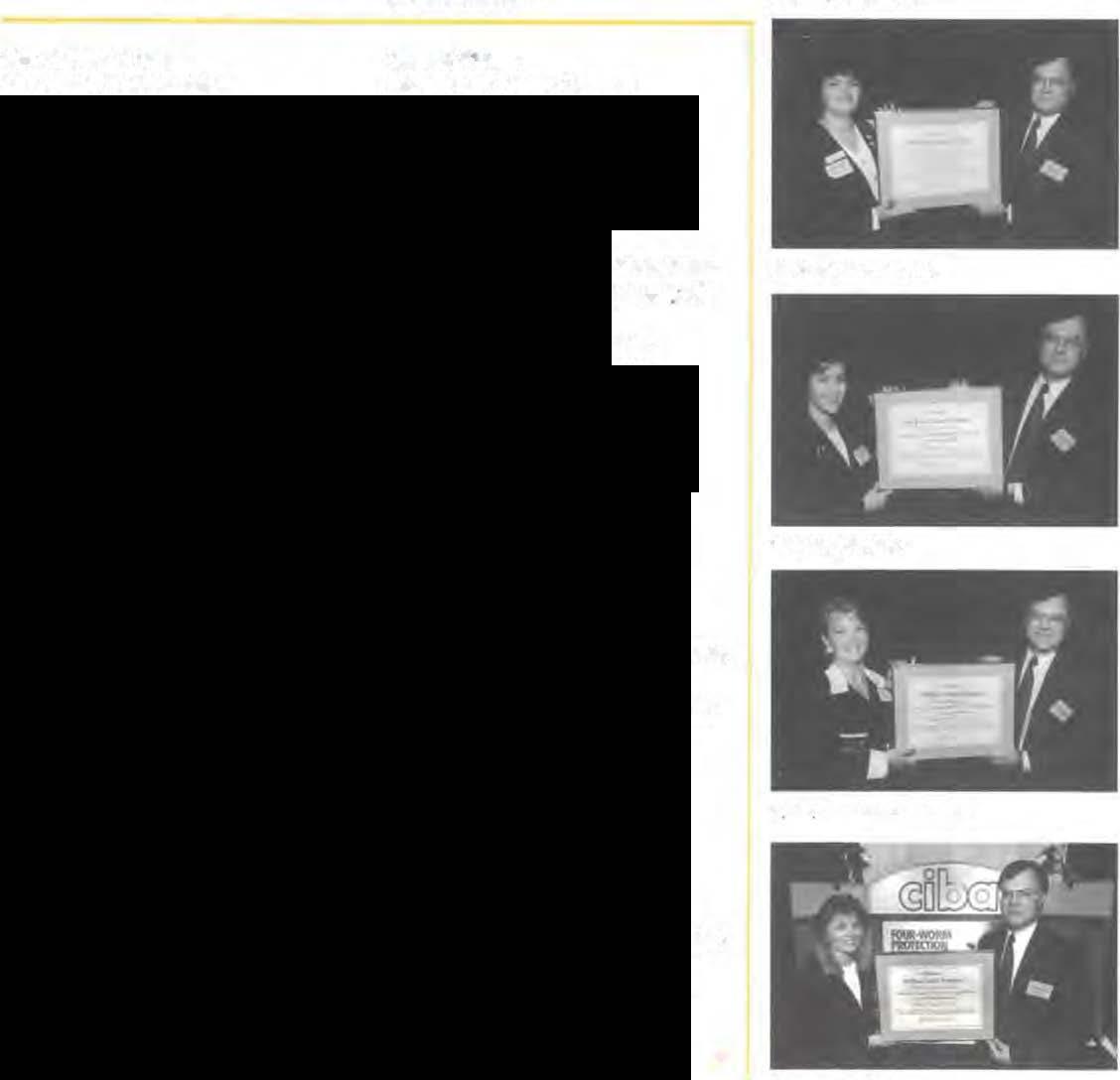
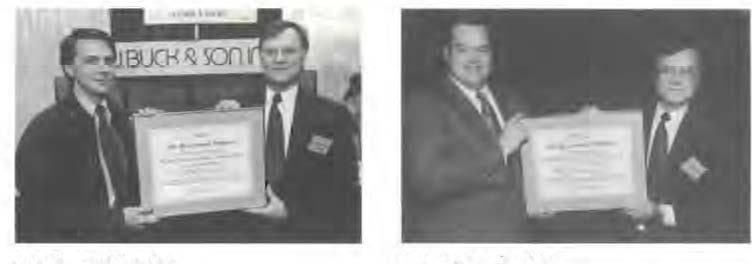
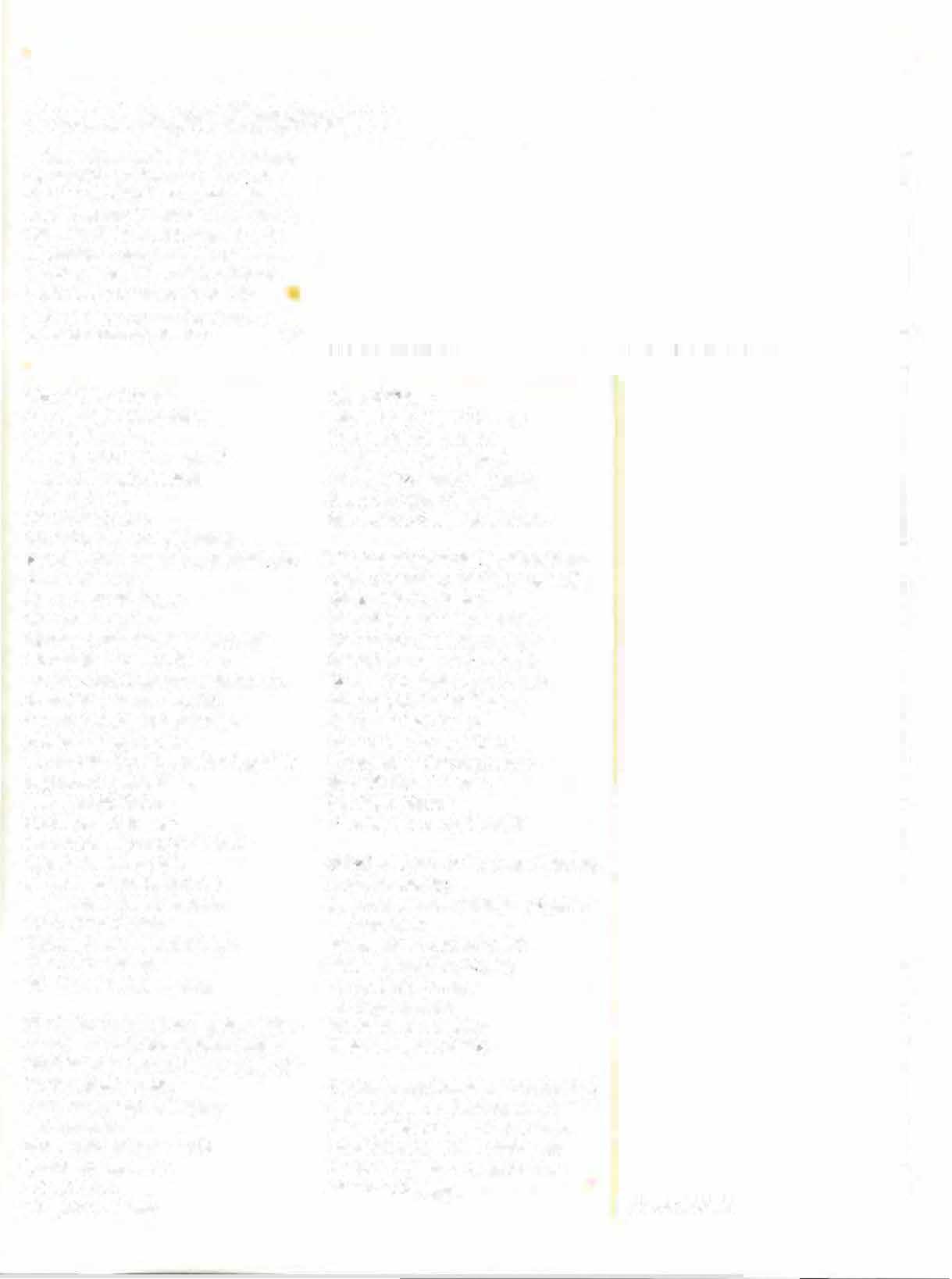 Pe1erson lmog111g. Inc.
//ill's PetNutrition, Inc.
The lams Company
D V.M Phormnceuticols. Inc.
C/b(l Ammo/ Hcal!lt
Pe1erson lmog111g. Inc.
//ill's PetNutrition, Inc.
The lams Company
D V.M Phormnceuticols. Inc.
C/b(l Ammo/ Hcal!lt
Bellwether 37
Bellwether is published by the School of Veterinary Medicine at the University qJ Pennsylvania.
&dllor
Helma Weeks
Writers
Dr. M. Josephine Deubler (Animal Crackers}
Helma Weeks
Marilynn Bacon
ntustrOlor
Marie Garofano Phoiographtrs
Addison Geary
1Vrt#Bolt� Liaison
Marilynn Bacon
We'd /Ike to hear your praise. criticisms. or comments. Please address your correspondence to:
Helma Weeks. University of Pennsyltlania School of Veterinary Medicine. 3800 Spruce Street. Philadelphta. PA 19104-6010: (215} 898·1475.
None ofthese articles are to be reproduced In anyjorm wllhout ttre permission of the editors of Bellwether.
@Copyright J995 by the Trustees of the Uniuersity of Pennsyluania.
Calendar
October 15, Back in the Park, a walka-thon with canine companions in Pennypack Park, Philadelphia, to raise funds for the American Cancer Society with a portion of the proceeds donated to the School foe cancer research. For more information call 215-898-1475.
November 5, Pennsylvania Hunt Cup
Univers ity of Pennsylvania
School ofVeterinary Medicine
3800 Spruce Street
Philadelphia, PA 19104-6008
Address correction requested
Races, Unionville, PA, to benefit New Bolton Center. For additional information call 61 0-869-0557.
November 9 and 10, 1995, Equine Breeders' Short Course on the stallion and mare for horse breeders and farm managers, New Bolton Center. For additional information call 6l0-444-5800, ext. 2222.
January 24 and 25, 1996, Penn Annual Conference, Adams Mark Hotel, Philadelphia.
January 27, 1996, Canine Symposium for dog breeders and owners, VHUP
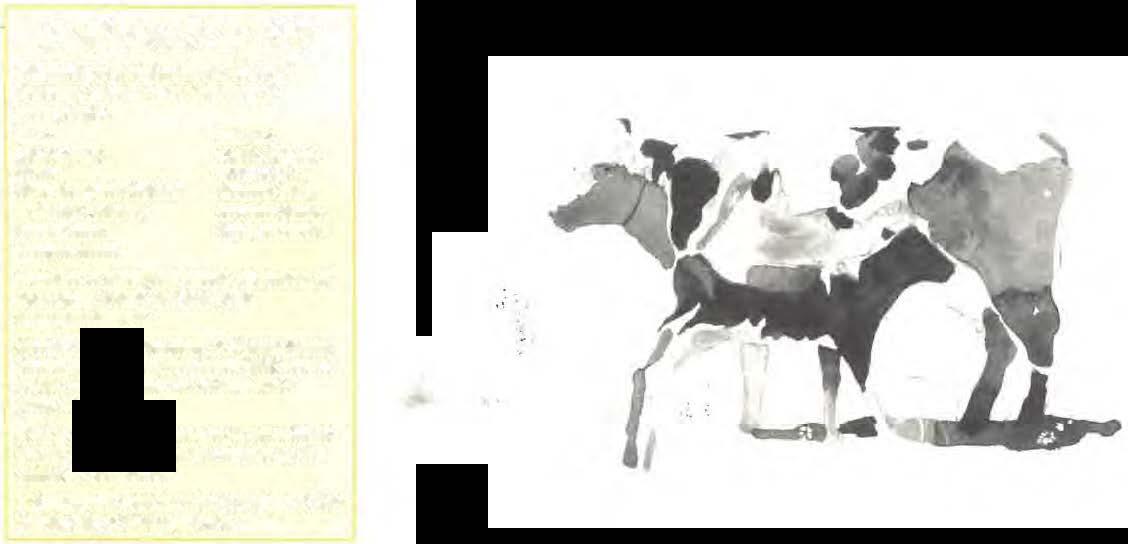
March 30, 1996, Feline Symposium for cat breeders and owoers, VHUP.
Nonprofit Organization U.S. Postage PAID
Philadelphia, PA Permit No. 25():;
